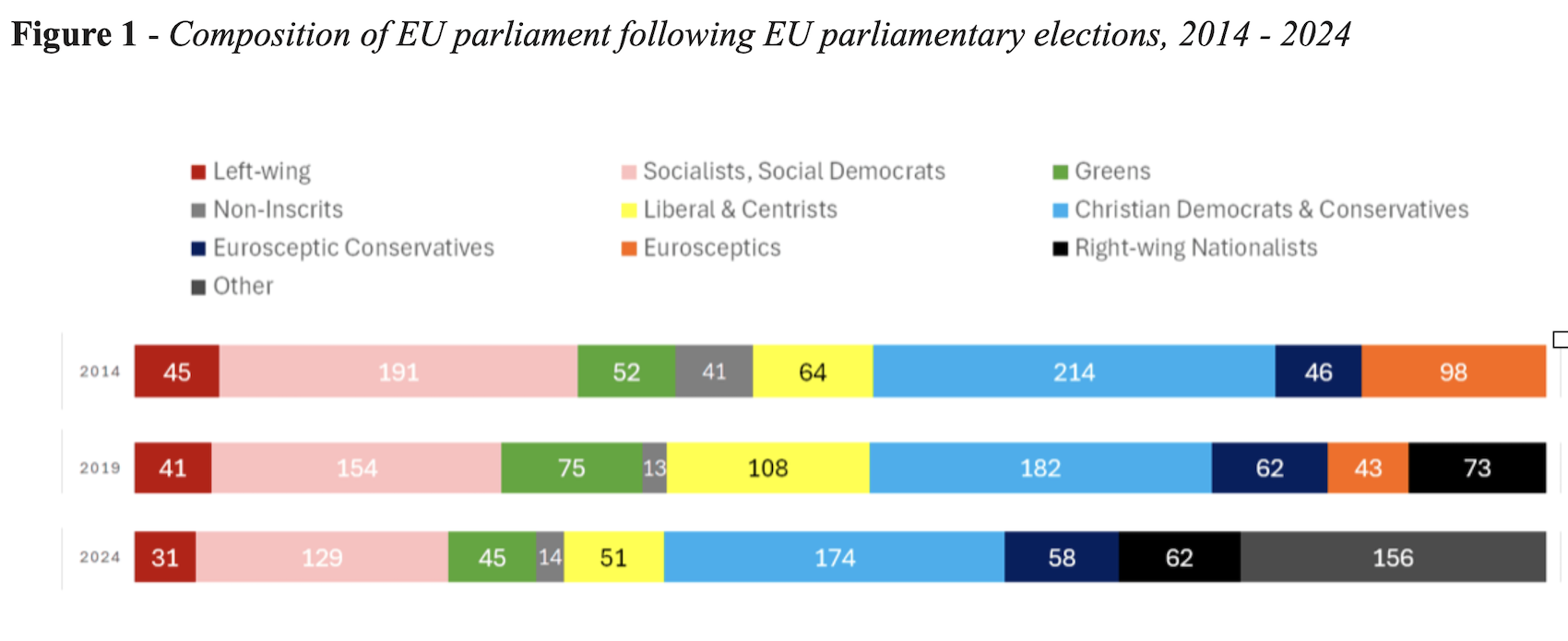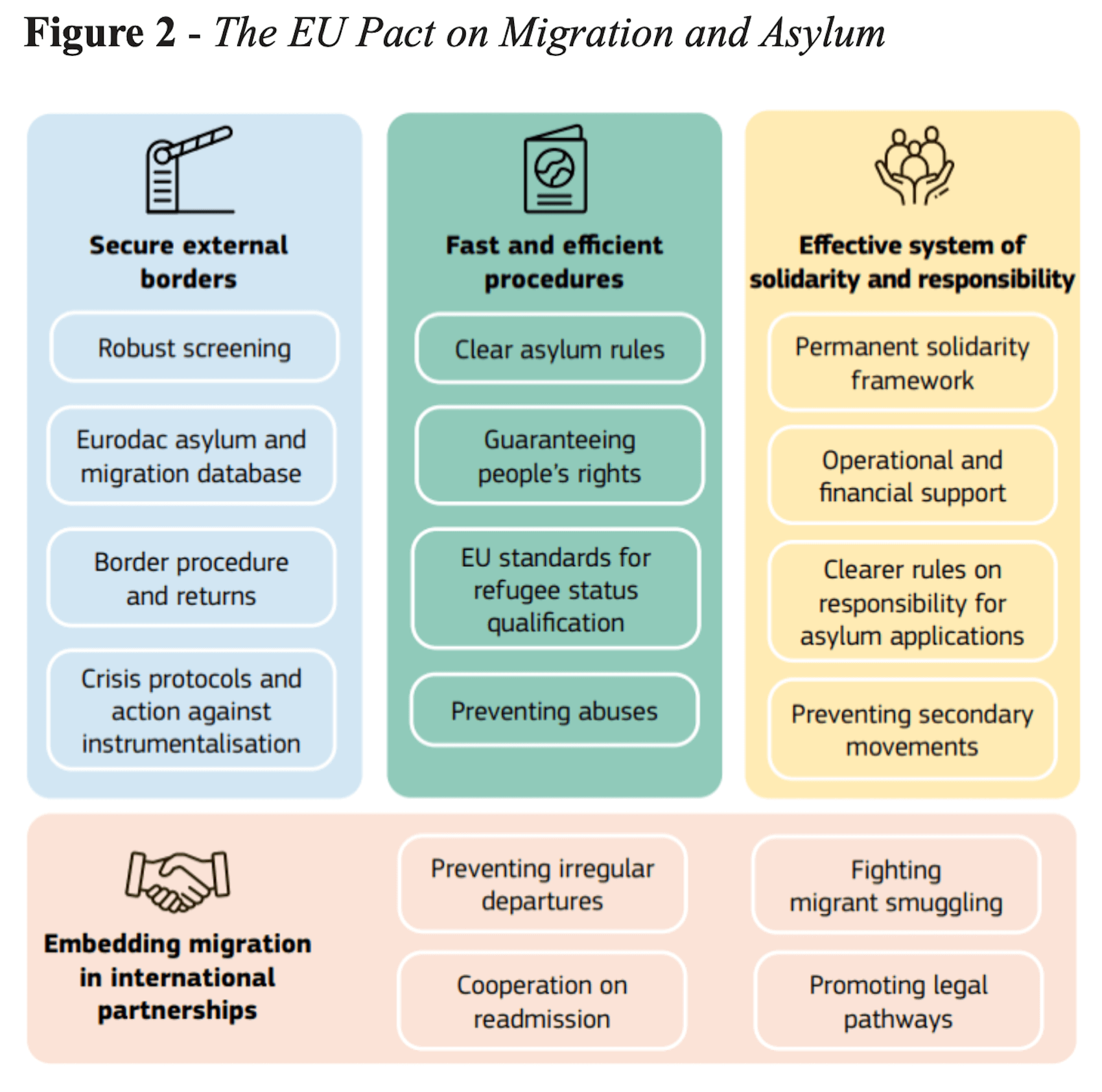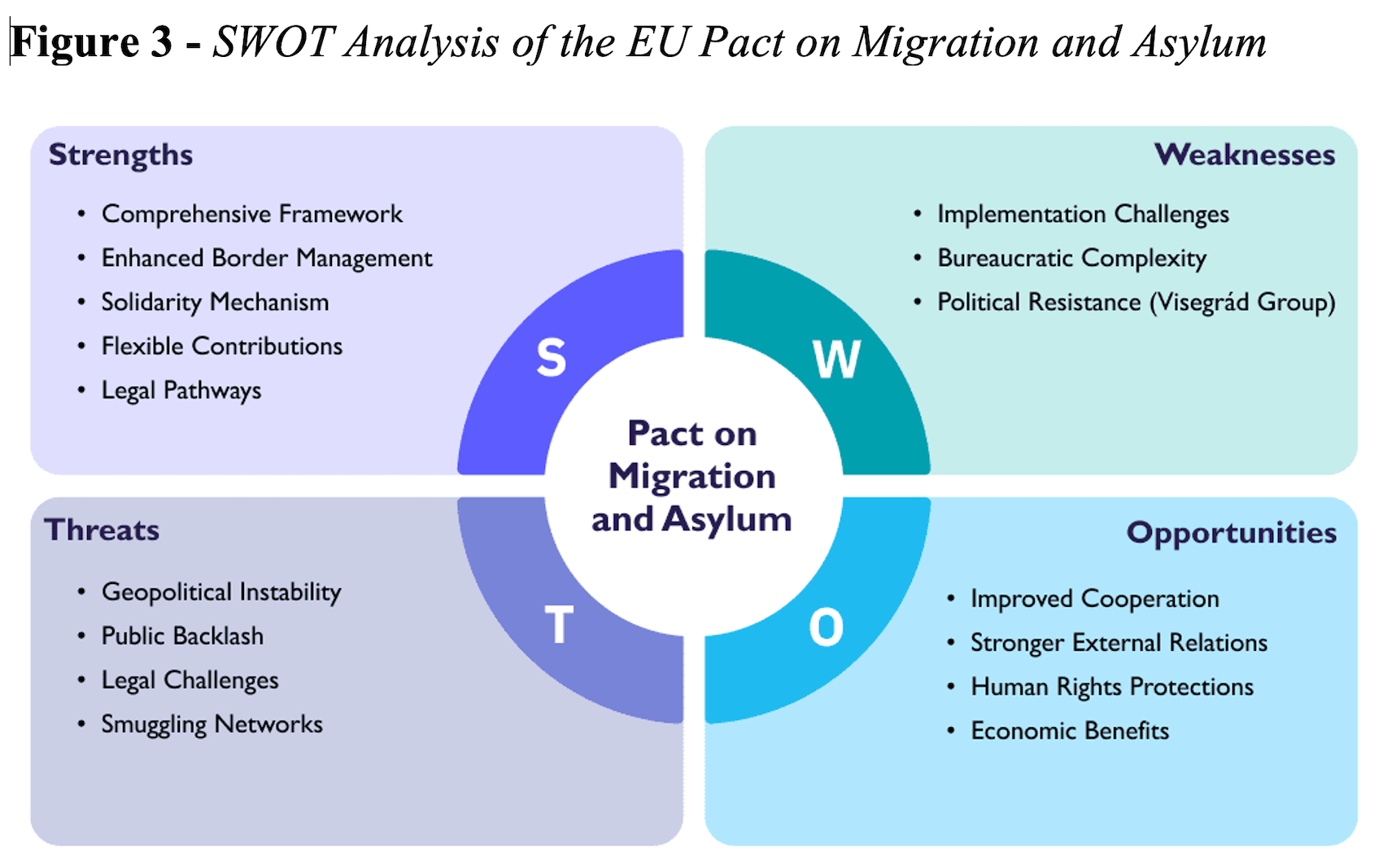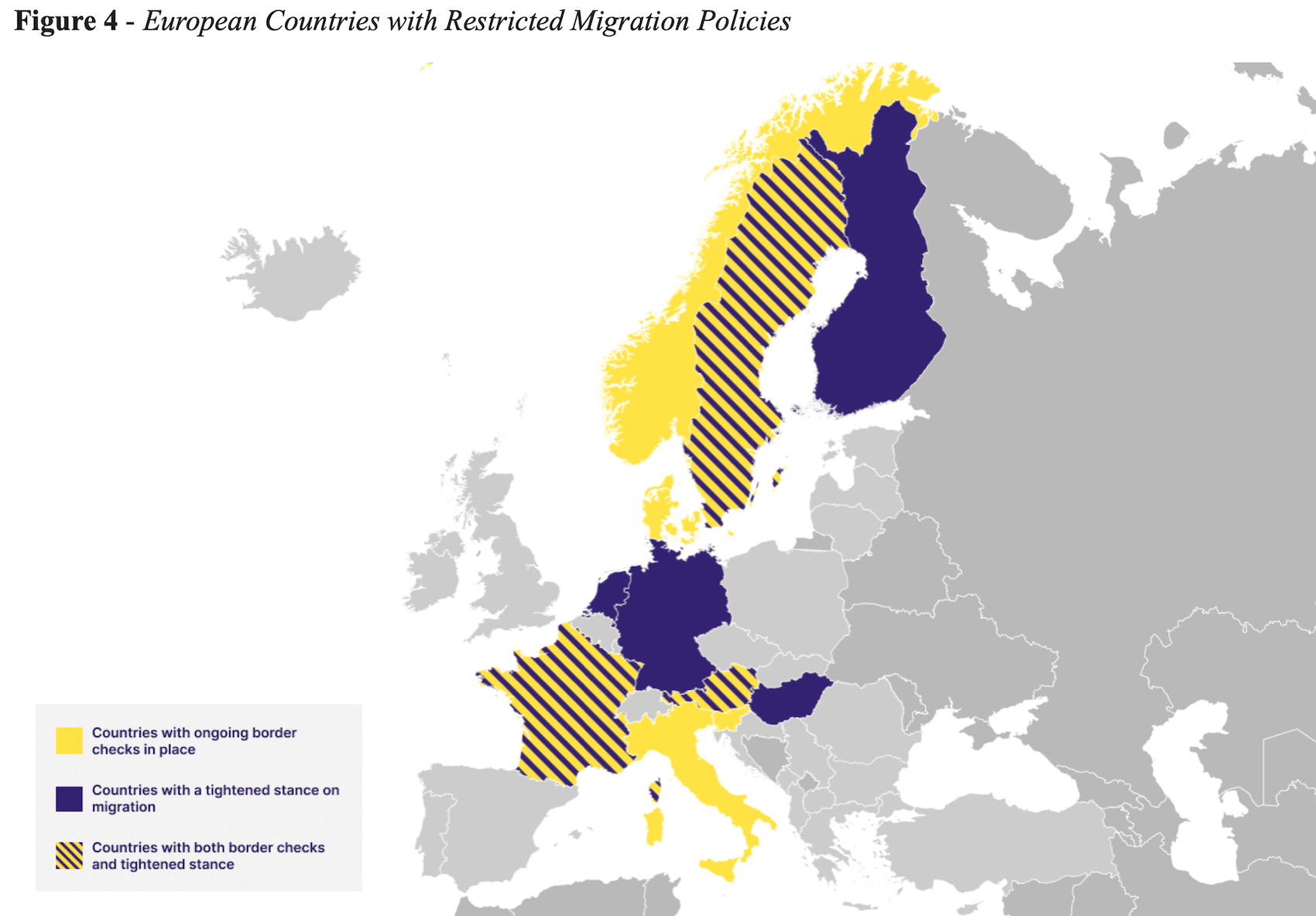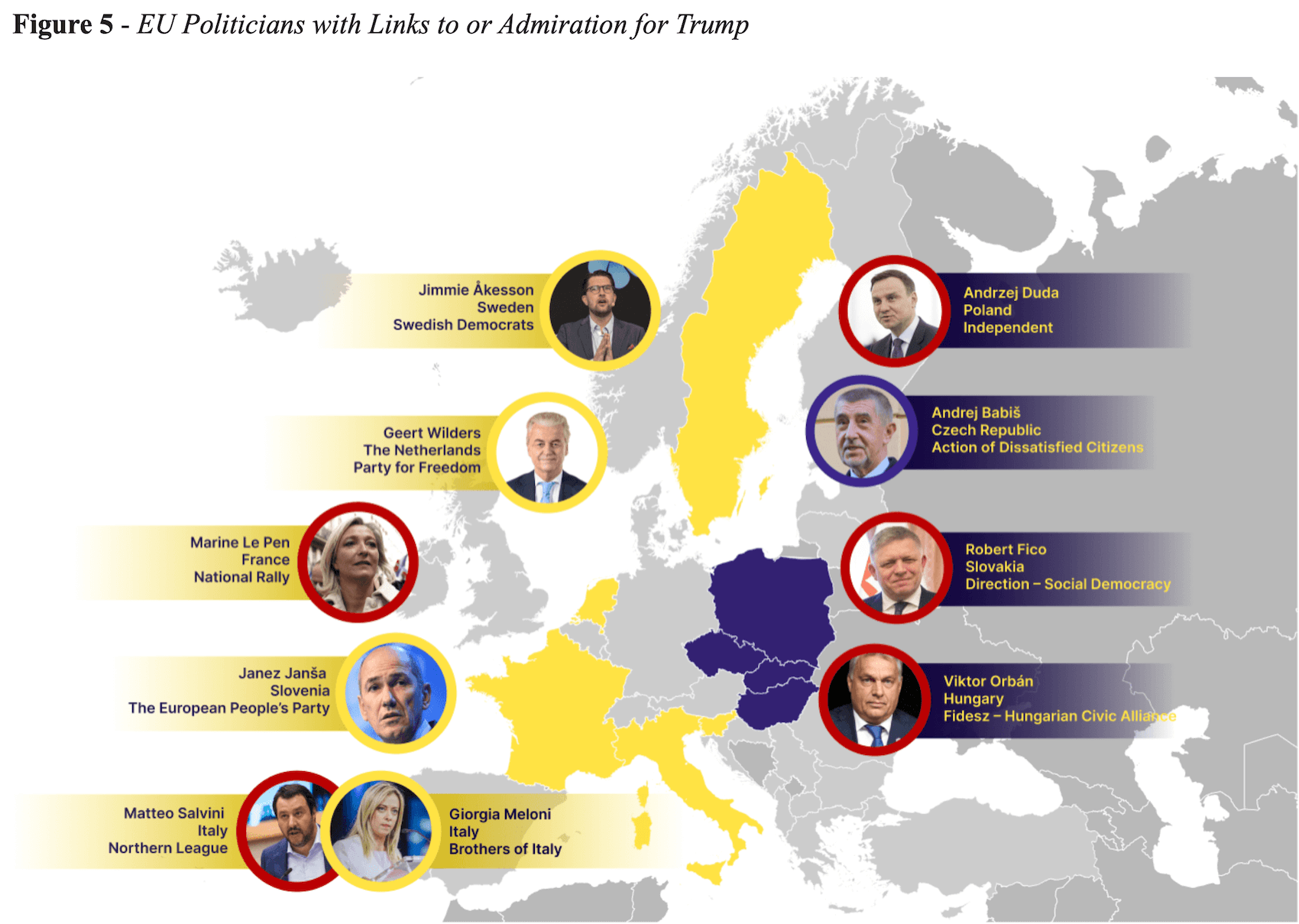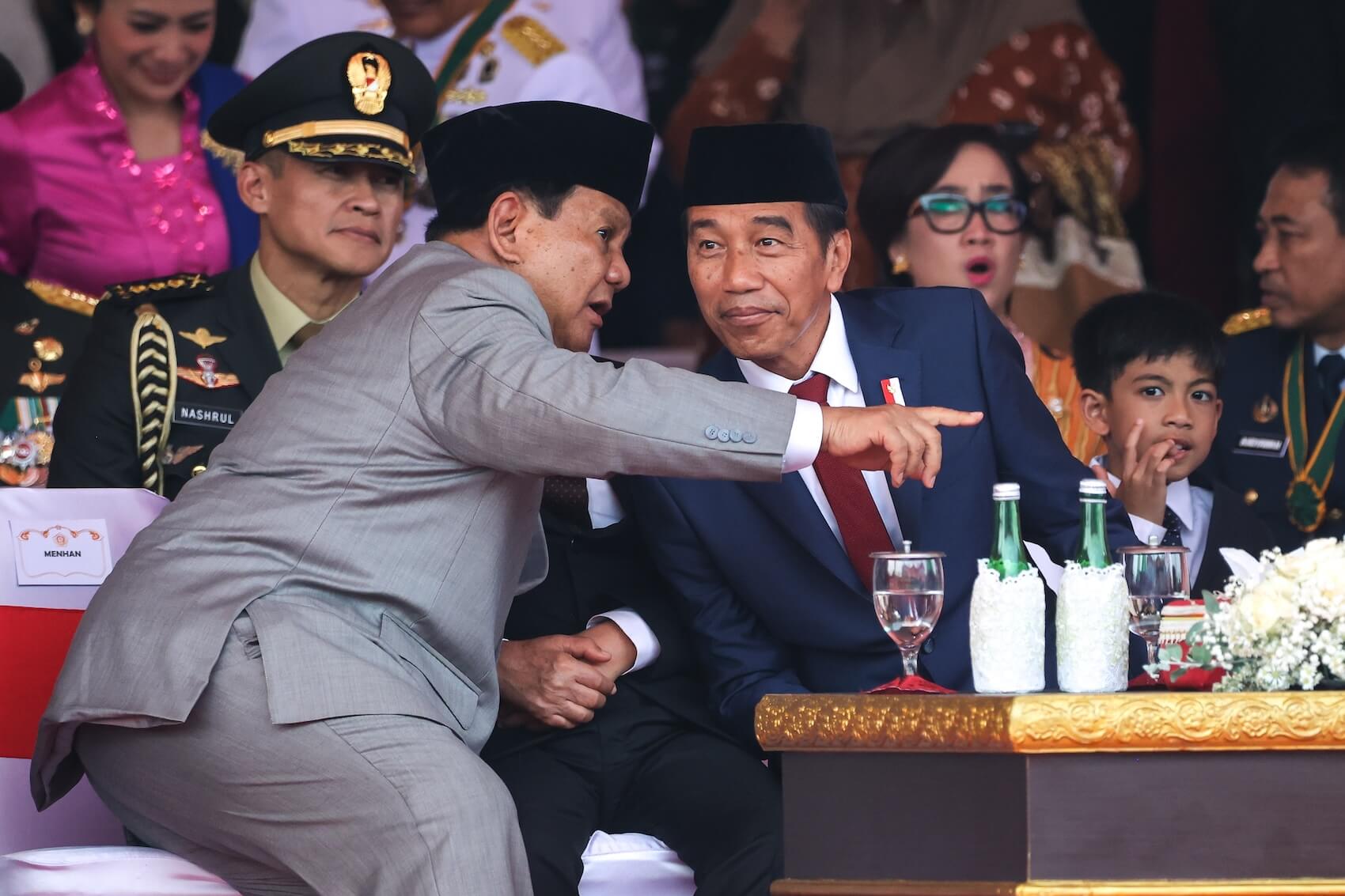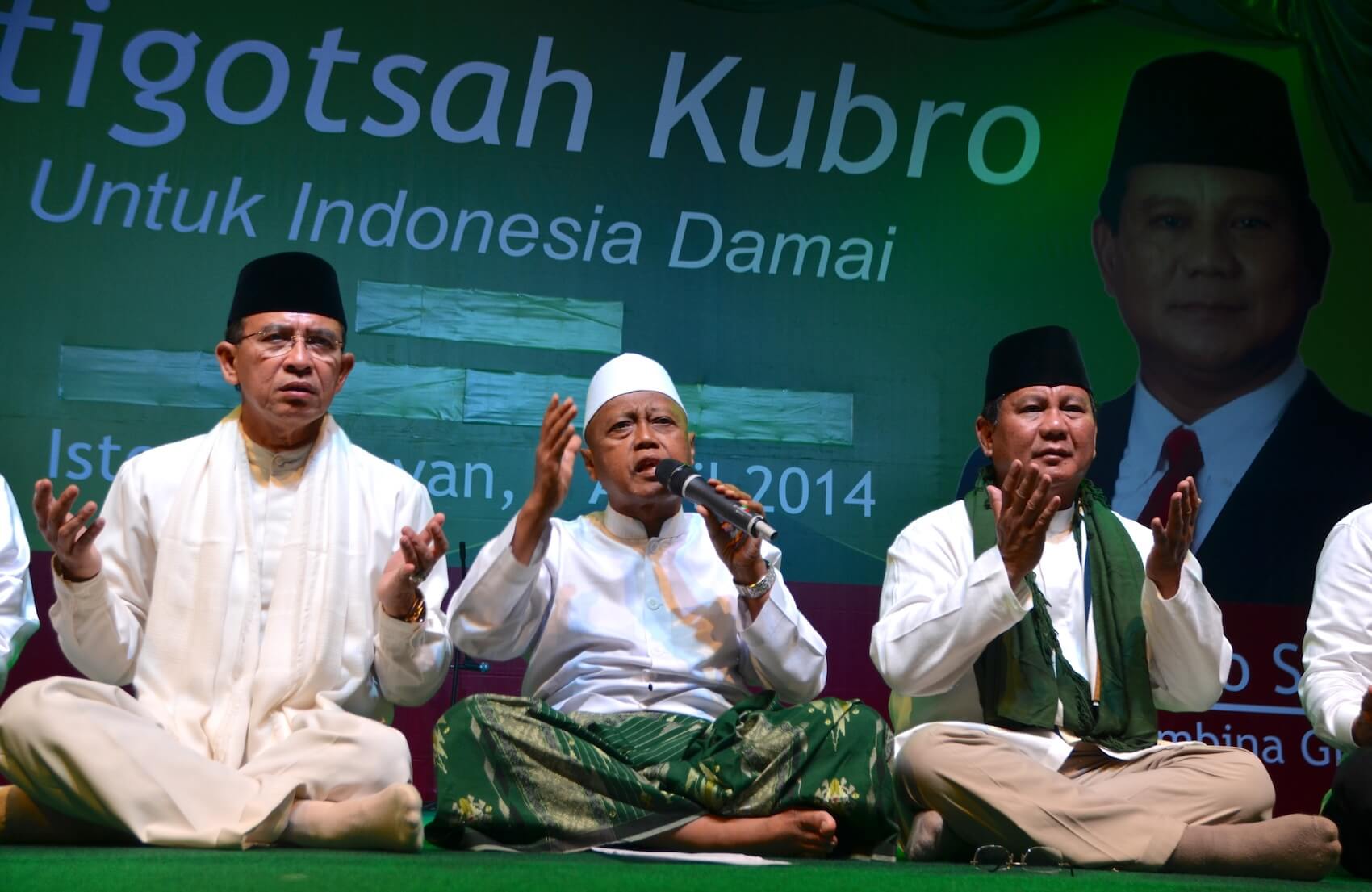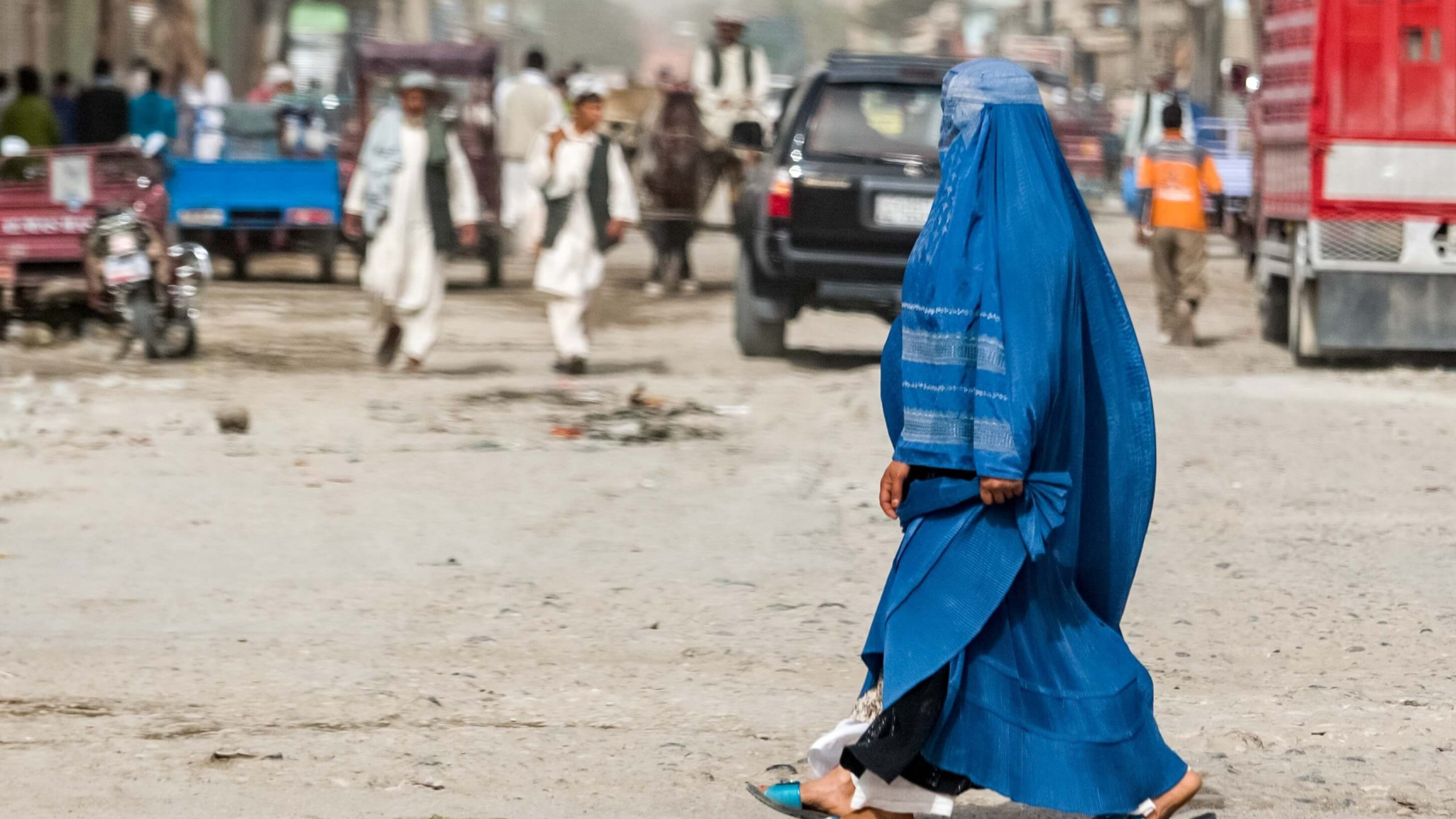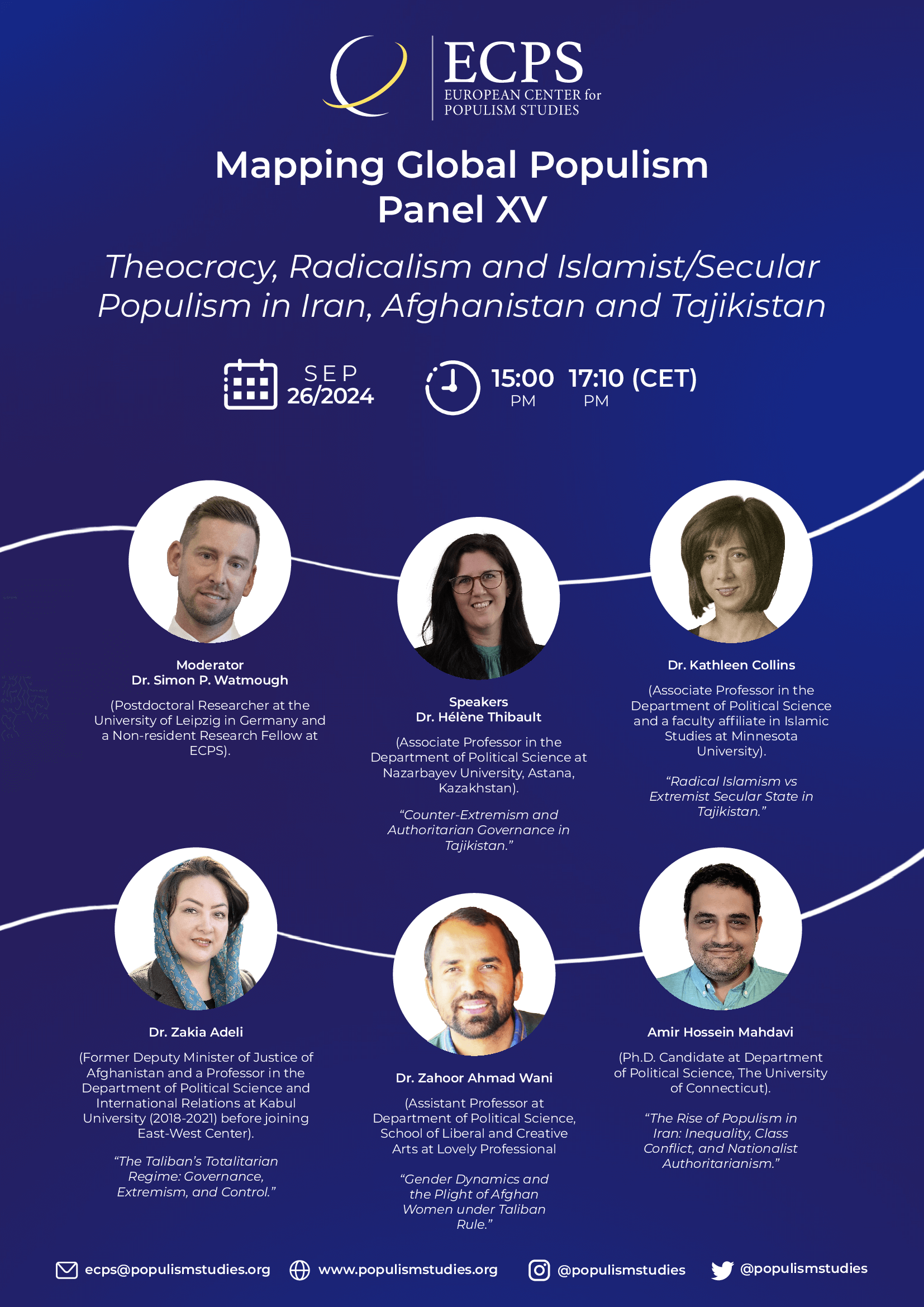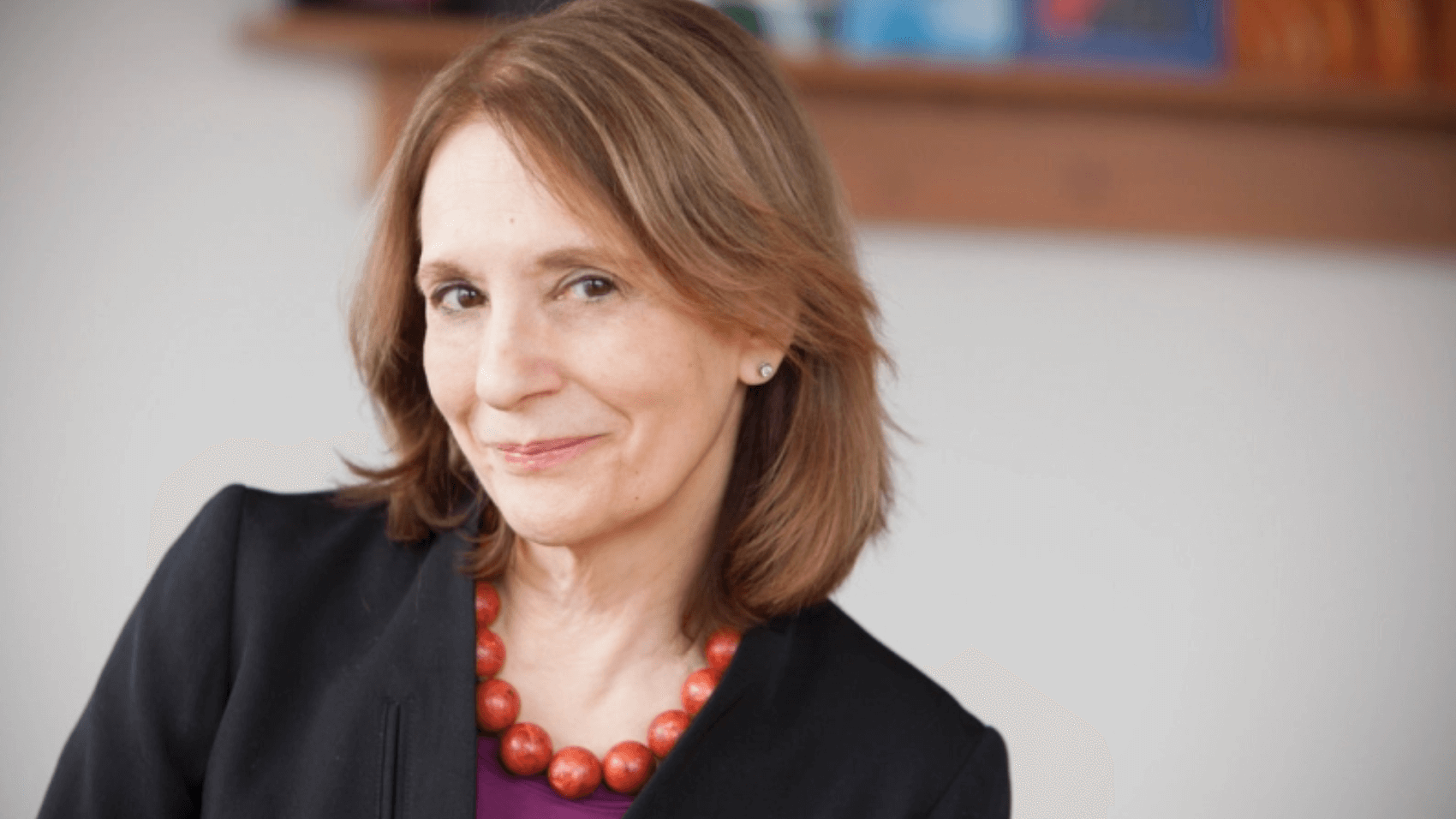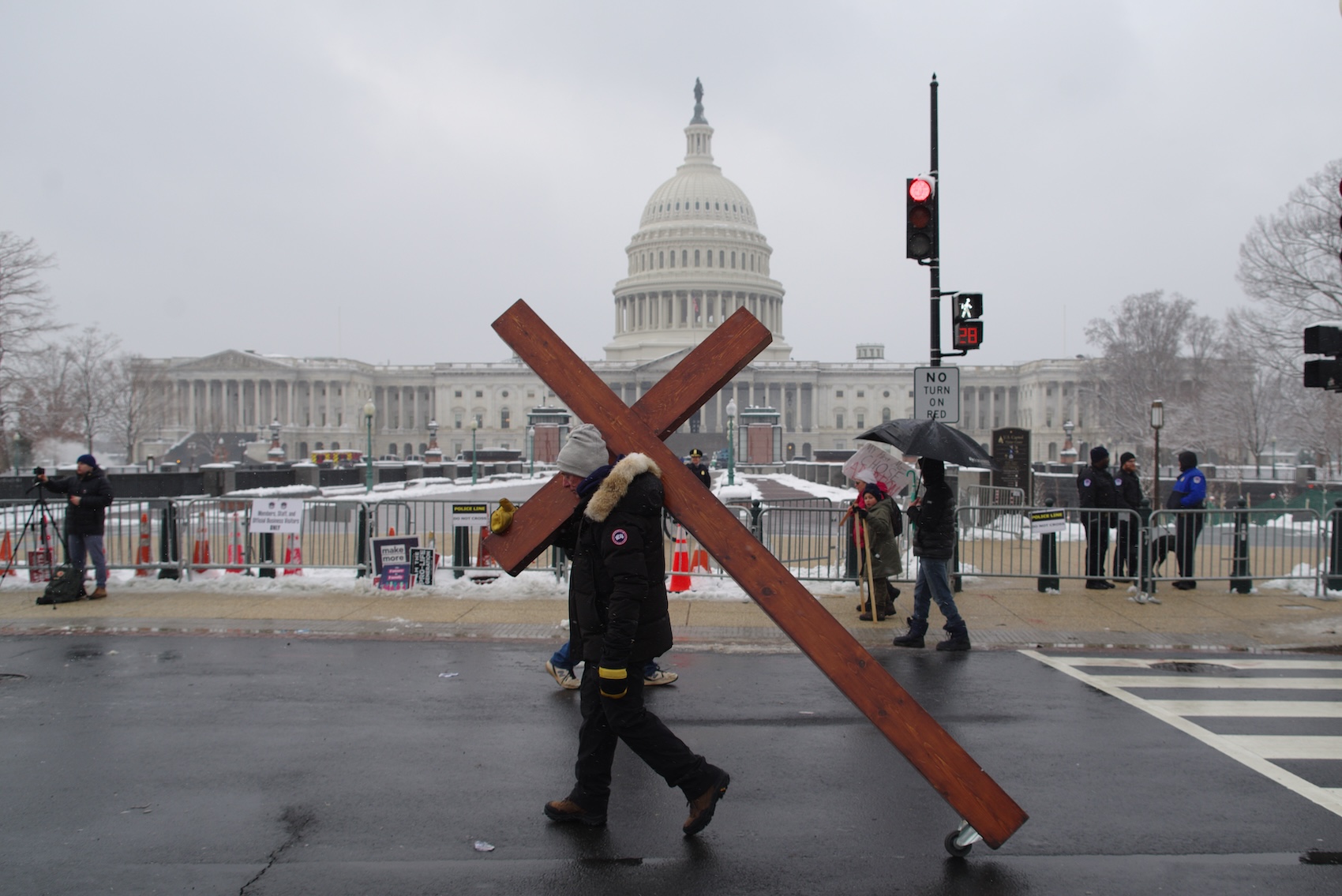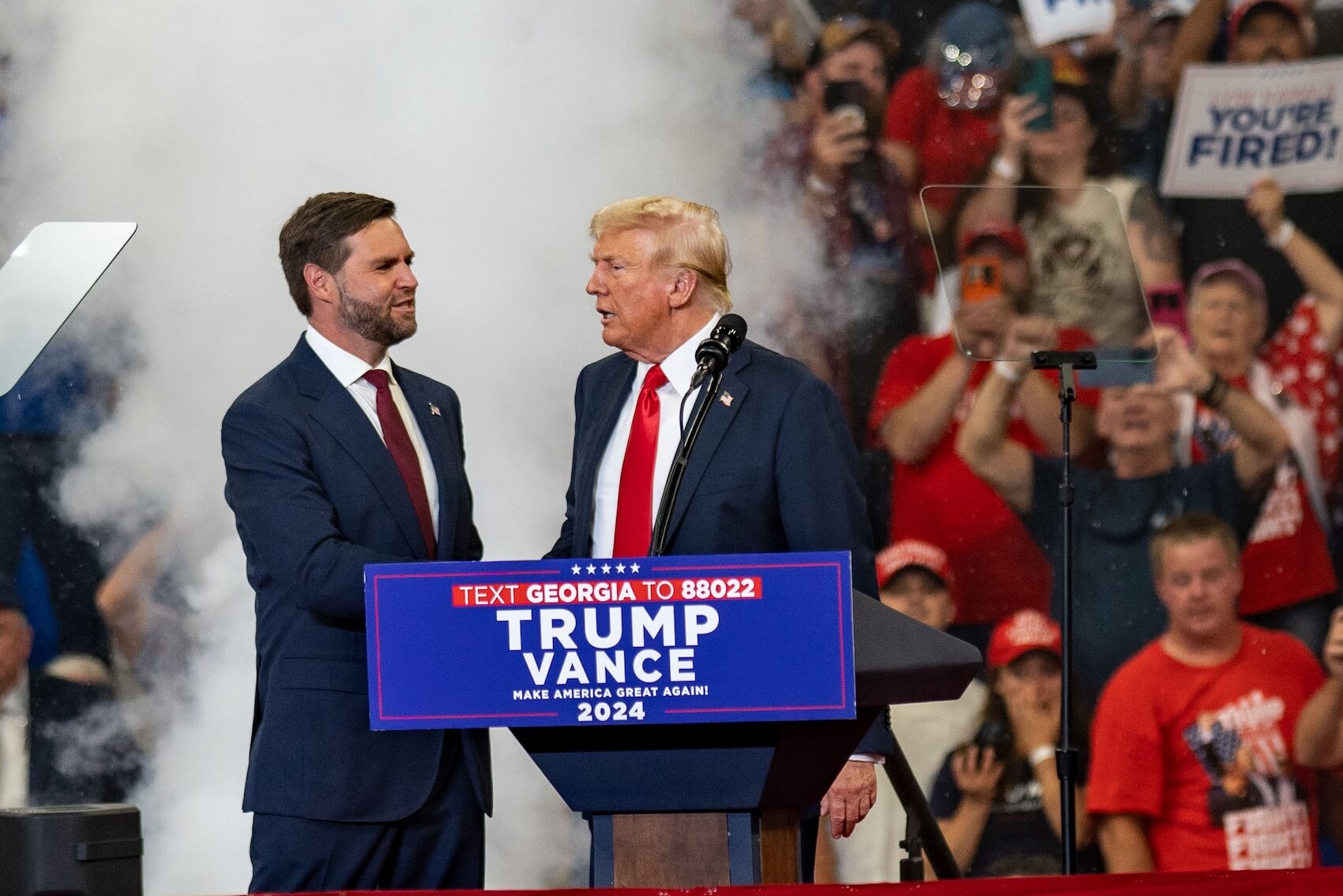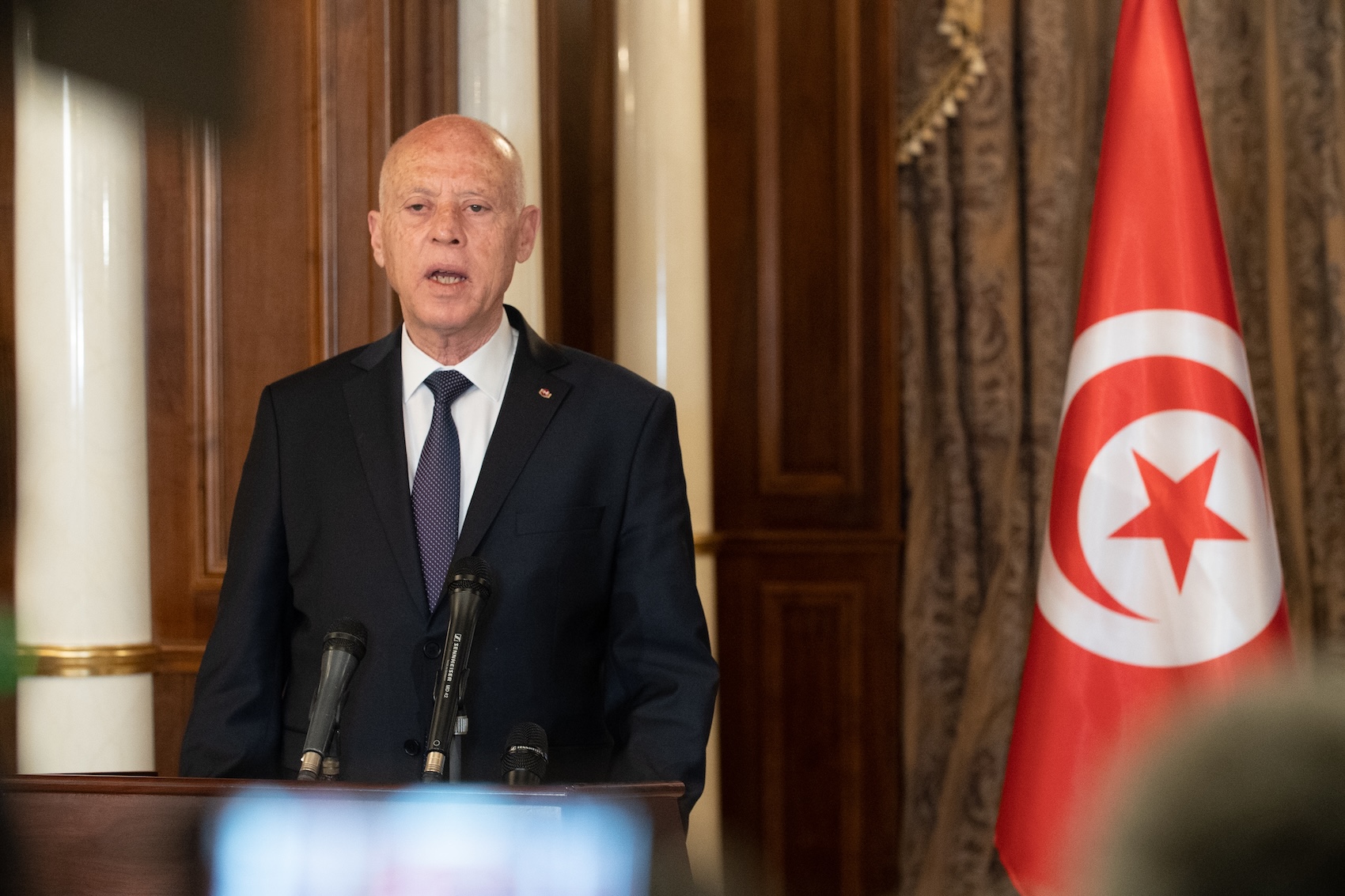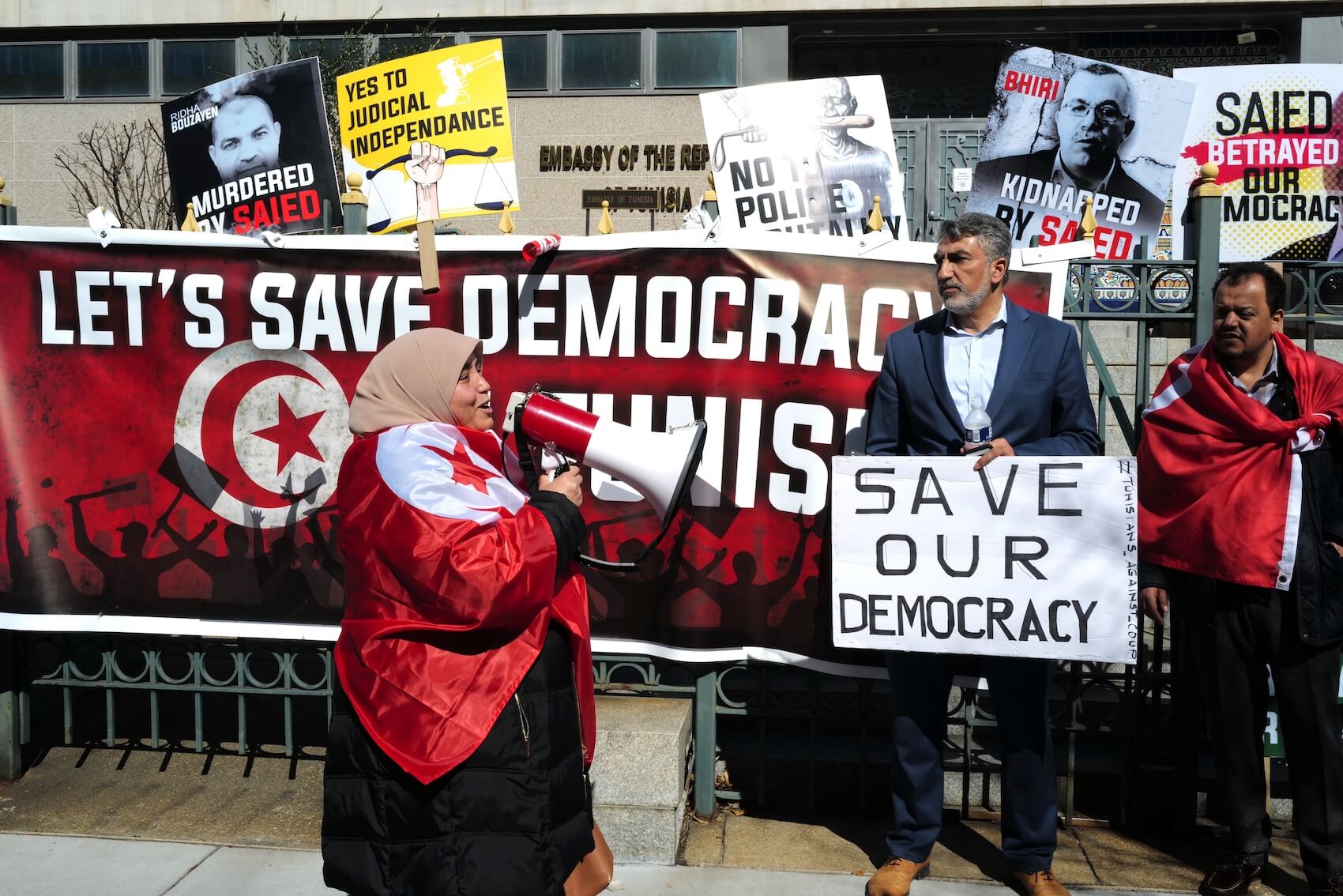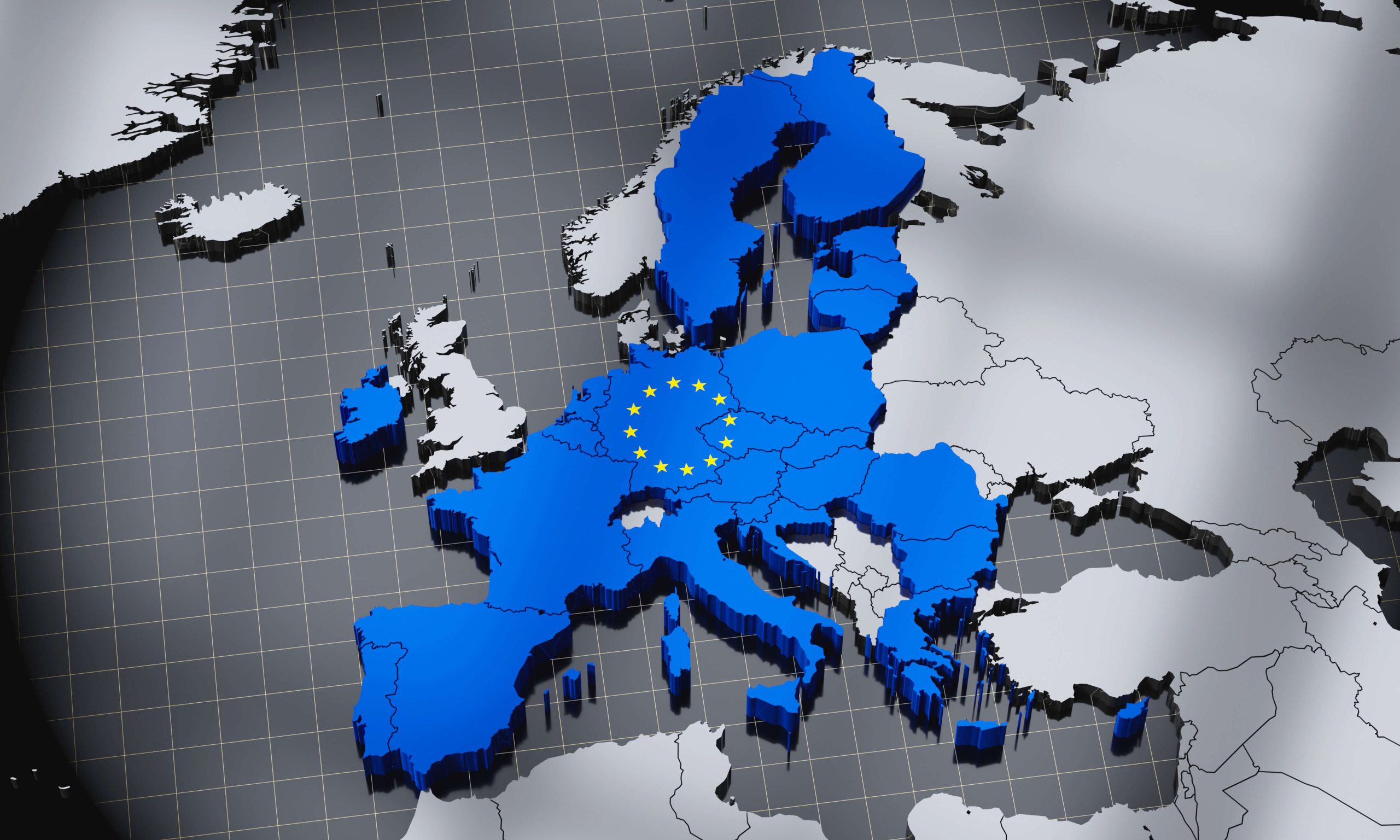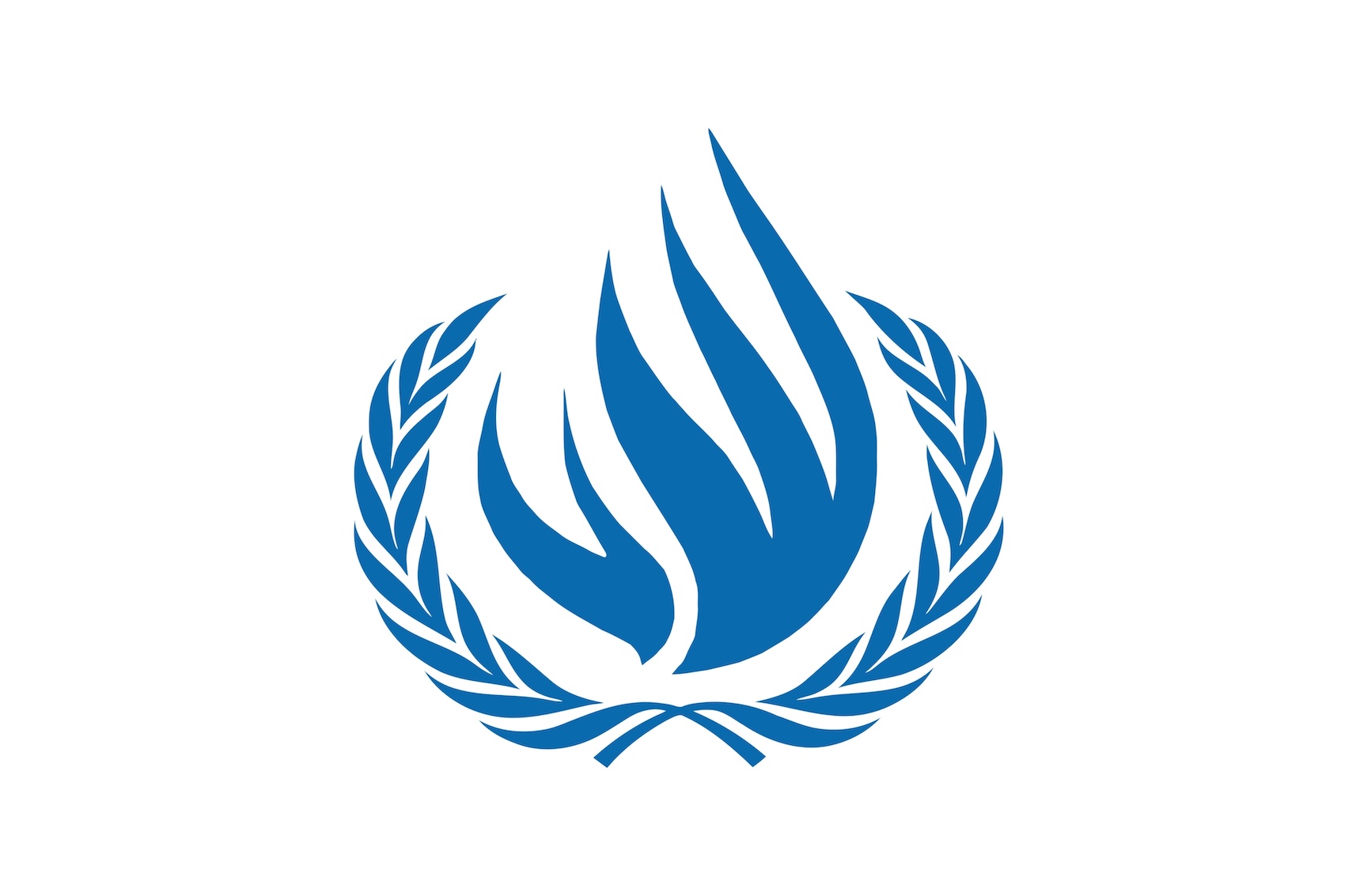Please cite as:
Biscaia, Afonso & Salgado, Susana. (2024). “The 2024 European Elections and Right-wing Populism in Portugal.” In: 2024 EP Elections under the Shadow of Rising Populism. (eds). Gilles Ivaldi and Emilia Zankina. European Center for Populism Studies (ECPS. October 22, 2024. https://doi.org/10.55271/rp0080
DOWNLOAD REPORT ON PORTUGAL
Abstract
Unlike previous European elections, the 2024 European election brought the discussion of European issues to the media and political agendas in Portugal, a country where most voters hold a positive image of the EU. Despite managing to elect its first two MEPs, the European election was not fertile terrain for Chega, as it stopped Chega’s continuous electoral growth since 2019 and its objectives were not fully achieved. Poor candidate selection, overambitious goals, a disconnect between Chega’s soft Euroscepticism and its supporters’ mostly enthusiastic view of the EU, ambiguity about which European party group it would join, and intermittent support from its popular leader, André Ventura, were relevant factors influencing Chega’s campaign and ensuing results. A relatively low turnout and overrepresentation of constituencies that are unlikely to vote for the populist radical right compounded the scenario.
Keywords: Portugal; Chega; populism; European elections; António Tânger Corrêa; André Ventura.
By Afonso Biscaia* & Susana Salgado** (University of Lisbon)
Introduction
The 2024 European election represented the first setback for right-wing populist politics in Portugal after five years of growth. Just three months previously, a snap general election gave the largest-ever representation for right-wing populist Chega (Enough). In this context, Chega publicly set its sights on winning the European elections outright, but poor candidate selection, a lacklustre campaign, a lack of clarity about Chega’s preferences regarding European party groups, and a manifesto that did not conform to its own supporters’ preferences contributed to hampering its goals. Thus, on 9 June, the dominant right-wing populist party in Portugal received around 783,000 fewer votes than it had in March while still electing its first two MEPs.
Growth and reorganization of right-wing populist politics in Portugal (2019–2024)
In the 2019 European elections, the National Renovation Party (Partido Nacional Renovador, PNR) and the Basta coalition (‘Basta’ is a synonym of Chega) were the right-wing populist options. PNR is older and more radical, while Basta was a coalition of small conservative parties and movements led by André Ventura, the leader of Chega, then a splinter group from the centre-right Social Democratic Party (Partido Social Democrata, PSD). Both candidacies were unsuccessful, garnering a combined tally of around 65,000 votes.
Nevertheless, 2019 would turn out to be a pivotal year for Portuguese right-wing populism. In the general election held in October, Chega became the first right-wing populist party to achieve a parliamentary breakthrough, attaining 1.29% of the vote. Chega enhanced its position in two subsequent (snap) elections, in 2022 and 2024, increasing its vote share to 7.18% and 18.07%, respectively, becoming the dominant radical right-wing populist party and third largest overall.
Chega’s agenda has focused on typical radical right-wing populist issues, such as corruption, immigration and security (Biscaia & Salgado, 2022; Mendes, 2022), as well as on the rhetorical construction of an in-group of ‘righteous Portuguese’ in opposition to out-groups and the political elite (Biscaia & Salgado, 2022). Foreign policy has not been Chega’s priority. Its stances on the matter are often instrumental. Regarding the Russian invasion of Ukraine, Chega adopted a pro-Ukraine position, aligned with most mainstream parties (Biscaia & Salgado, 2023). On the Israel-Palestine conflict, it was clearly pro-Israel, claiming Netanyahu’s government was entitled to ‘neutralize the threat’, and was the only parliamentary party that declined to join calls for a ceasefire (Agência Lusa, 2024a).
The sovereign debt crisis of the 2010s and subsequent austerity policies drove some voters out of the electoral market and cleared the way for smaller parties to make gains by bringing new issues to the fore (Lisi et al., 2020). Chega was the most successful party in capitalizing on these opportunities and managed to mobilize voters who had abstained in previous elections and maintain their vote, but also attracted voters who had previously voted for PSD and the Socialist Party (Partido Socialista, PS) in previous elections (ICS–ISCTE Surveys, 2024b). Anti-Roma sentiment and welfare chauvinism were key issues in Chega’s growth even before its official founding, as Ventura’s first run for local office, still with PSD, leant heavily on Romaphobia (Bugalho, 2017). Similarly, Afonso (2021) has found that electoral support for the radical right in the 2021 presidential election in Portugal was disproportionately higher in those localities with greater concentrations of Roma populations and welfare beneficiaries. However, as concerns about immigration have intensified in Portugal, with support for restrictive migration policies reaching a slight majority (55%) in 2023–2024 (ICS–ISCTE Surveys, 2024c), migrants – especially Muslims – have become a more prominent target in Chega’s rhetoric (e.g., Matos, 2024).
Other parties tried to emulate Chega’s quick growth. The PNR rebranded as Ergue-te (Rise Up) shortly after Chega’s success in 2019, but the move proved ineffectual, as it received a paltry 0.09% of the vote in the 2024 general election. The Democratic Republican Party (Partido Democrático Republicano, PDR), a centrist populist party (Salgado & Zúquete, 2017), also rebranded, taking on the name Democratic National Alternative (Alternativa Democrática Nacional, ADN) and establishing connections with ultra-conservative Brazilian evangelical groups (Vasco, 2024). The ADN baffled pundits in the 2024 general election by multiplying its previous election tally tenfold and qualifying for state funding despite narrowly failing to elect a single MP; the result was interpreted as a product either of influential political evangelicalism (Henriques, 2024) or confusion between its name and that of the Democratic Alternative (AD), a centre-right coalition composed of the PSD, the CDS–People’s Party and the People’s Monarchist Party (PPM) (Camilo, 2024).
European election: candidates, manifestos and the campaign
Chega’s lead candidate in the European election was António Tânger Corrêa, a party vice president and former diplomat. A month before the election, 71% of poll respondents said they did not know who he was (CESOP Surveys, 2024a), and a few days before the election, 22% of survey respondents who had voted for Chega in March said they were still undecided about the European election (CESOP Surveys, 2024b). The candidate was perceived as eccentric, which was reinforced by his endorsement of conspiracy theories such as ‘the great replacement’ and use of antisemitic tropes, like accusing the Mossad of forewarning American Jews of terrorist attacks on 9/11 (e.g., Chagas, 2024; Malhado, 2024). Ventura, much more popular among Chega supporters, seemed not to prioritize the European election, spending significant time campaigning for regional elections in Madeira; he only joined Tânger Corrêa in the last stretch of the campaign, trying to ensure improved media coverage.
Tânger Corrêa was also ambiguous about Chega’s membership in European political groups, refusing to address the issue and, at one point, saying voters did not need to know how the party would behave in the European Parliament (Oliveira Martins et al., 2024). Nevertheless, Chega had been a member of the Identity and Democracy group (ID) since 2020. Its views on European issues were generally aligned with those expressed on ID’s program, such as its opposition to ‘any supranational construction’ and demand for stricter immigration control (Identity and Democracy Party, n.d.) as well as in drawing a ‘sharp distinction between Europe and the European Union’ and emphasis on intergovernmental cooperation mechanisms, as advocated for in ID’s ‘Declaration of Antwerp’ (Identity and Democracy Party, 2022). However, only 5% of Portuguese Eurobarometer respondents have a negative image of the EU (Public Opinion Monitoring Unit, 2024), and Chega supporters are only slightly less enthusiastic. On average, they express positive views of EU and Eurozone membership, as well as further European integration. They differ from the mainstream mainly in expressing more disillusionment about the bloc’s democratic nature: 46% of surveyed Chega supporters were ‘reasonably’ or ‘extremely’ satisfied with it, compared to 56% of PS supporters and 67% of those who identify with PSD (ICS–ISCTE Surveys, 2024a).
Aware of the EU’s popularity in Portugal and among its supporters, Chega articulated some soft Euroscepticism in its European election manifesto: ‘A Europa Precisa de uma Limpeza’ (Europe Needs a Clean Up). Thus, the document conceded that EU membership had ‘served the [Portuguese] national interest’ (Chega, 2024: 3) but defined Chega as ‘a deeply sovereigntist, pro-European, and Atlanticist’ party (Chega, 2024: 3) and claims that European institutions have been ‘overtaken by a narrow bureaucratic oligarchy that disregards member states’ identities and history and meddles in practically every dimension of life (Chega, 2024: 3–4). The manifesto envisioned intergovernmental cooperation guided by an ‘uncompromising’ defence of each member state’s national interest as the main policy mechanism and dismissed further integration (Chega, 2024: 6–7). Migration was presented as the foremost policy priority, arguing that it threatened ‘member states’ identity and security’ by pointing at ‘the situation in Germany, Italy, Greece, France, and Sweden’ (Chega, 2024: 7–8). Other stated priorities were expanding member states’ military capabilities to end ‘military reliance on the United States’ (Chega, 2024: 10) while urging that Portugal meet the minimum NATO commitment of 2% of GDP for annual defence spending (Chega, 2024: 10), and fighting corruption.
However, reinforcing the second-order nature of European elections in Portugal, Chega’s manifesto proposals were mostly focused on domestic policy, like abandoning the UN’s Global Compact for Migration, revoking the CPLP (Community of Portuguese Language Countries) mobility agreement, and establishing stricter rules for Portuguese naturalization. European-level proposals were scarce but included reinforcing the Frontex mechanism (Chega, 2024: 8), ending assistance for ‘NGOs that support illegal immigration’ and, vaguely, the ‘generalized adoption of the [immigration] models the UK has been implementing’ (Chega, 2024: 8). Despite Ventura having called for further sanctions on Russia in the past (Biscaia & Salgado, 2023), no specific course of action was proposed regarding ongoing wars.
Regarding the other populist parties’ lead candidates in the European election, ADN’s lead candidate was Joana Amaral Dias, a well-known former MP of Left Bloc (Bloco de Esquerda, BE), and Ergue-te selected Rui Fonseca Castro, a controversial former judge. ADN’s European election manifesto articulated what could be described as a denialist ideology. It urged peace between Russia and Ukraine, lamenting the loss of access to ‘cheap Russian energy’ (ADN, 2024: 4) and urging an end to sanctions (ADN, 2024: 25), opposed green transition initiatives as ‘turning science into a dogma’ and ‘making life impossible for European businesses’ (ADN, 2024: 7). ADN castigated ‘the failure of integration’ and demanded restrictive migration policies (ADN, 2024: 39). Ergue-te’s hard Eurosceptic manifesto ‘Libertar a Europa da União Europeia’ (Freeing Europe from the European Union) predicted and advocated for the ‘inevitable implosion’ of the EU (Ergue-te, 2024: 4), but recognized that Portugal’s exit from the bloc was ‘for now, impossible’ (Ergue-te, 2024: 2). It denounced migration, including of ‘so-called refugees’ (Ergue-te, 2024: 5) and proposed the reversal of same-sex marriage laws (Ergue-te, 2024: 7). Regarding national defence, Ergue-te stance is akin to Chega’s, advocating for European ‘military emancipation’ from the United States, through the creation of a more robust defence industry (Ergue-te, 2024: 7).
Debates provided opportunities to set the agenda. In past European election campaigns, the media had been criticized for focusing excessively on domestic issues, but that was not the case in 2024, as debates focused on issues like immigration, defence, EU enlargement, and the potential nomination of the former prime minister, António Costa, as president of the European Council (Ribeiro, 2024; Ribeiro Soares & Martins, 2024). Apart from Costa’s – at the time putative – nomination, the issues roughly corresponded with the electorate’s assessment of the most important issues facing the EU, of which the war in Ukraine, the internal situation, immigration, and the economy came out on top (Public Opinion Monitoring Unit, 2024). Tânger Corrêa participated in the mainstream televised debates but did not prove appealing to TV audiences, as his appearances were estimated to be the least watched (Borges Ferreira, 2024), and his assertions frequently fact-checked (e.g., Leal, 2024) and derided as too weird. ADN and Ergue-te participated in a single debate between smaller parties without parliamentary representation. However, these parties failed to seize the opportunity to reverse their image as fringe candidates.
The election
In Portugal, as in other member states, European elections are considered second-order elections, and the 2024 European elections came at the uncertain beginning of a new political cycle in Portugal. PS, led by António Costa, had governed since 2015 and remained fairly popular throughout most of its long tenure, but several scandals deteriorated its image, and the AD coalition, led by PSD, narrowly won the 2024 snap general election. Its slim parliamentary plurality – 80 MPs to PS’s 78 and Chega’s 50 – means the new government must negotiate in parliament, including over the state budget. Pointing to similarities between PS and PSD, Ventura designated himself as ‘the real leader of the opposition’ and announced that Chega would not vote AD legislation through (Carrapatoso & Figueiredo, 2024). Tânger Corrêa’s candidacy was launched at this time, which partly explains Ventura’s statement of Chega’s objectives: to win the election, avoid a centrist majority in the European Parliament and Ursula von der Leyen’s re-election, and spearhead a ‘grand European coalition, from Hungary to Lisbon’ (Figueiredo, 2024).
The aftermath of the general election was still an important topic during the European Parliamentary election campaign and despite a slight increase in participation from the previous two elections (2014: 33.84%; 2019: 30.73%), only 36.47% of eligible voters deposited ballots on 9 June, compared to 59.84% in the March general election. Ultimately, PS, whose lead candidate, Marta Temido, owed her popularity to having been health minister during the COVID-19 pandemic, reversed the earlier results, narrowly beating AD, whose list was led by TV pundit Sebastião Bugalho. Both achieved vote shares of around 30% and fewer than 40.000 votes separated them. Similarly, left-wing parties’ results were akin to those in March, and the Portuguese Communist Party (Partido Comunista Português, PCP), the BE, and Livre (Free) all tallied at around 4%. However, only the former two managed to elect an MEP.
The most significant differences in results happened on the right: despite lower participation, Liberal Initiative (Iniciativa Liberal, IL) gained nearly 40,000 votes more than in the general election, up to 9.08%, and elected two MEPs. Conversely, Chega lost nearly 783.000 votes from its general election tally despite holding on to third place and also electing two MEPs, with 9.79% of the total vote. Chega’s losses were greater than any other party’s, and, unlike in the general election, it failed to capture first or second place in any electoral district in Portugal. However, it did repeat wins in constituencies abroad, like Switzerland or Brazil.
Chega’s loss can also be partially explained by a more challenging context in this election, namely concerning voter demographics, since older and more educated voters, who are more likely to vote in low-turnout elections and less likely to vote for the right-wing populist party, were estimated to have been overrepresented (Magalhães, 2024). On the night of 9 June, Tânger Corrêa described the day as ‘not good’, and Ventura admitted Chega ‘did not achieve its goals’ but found comfort in obtaining more votes than in 2019 and electing MEPs (Camilo, 2024b). The ADN and Ergue-te failed to elect any MEPs, attaining 1.37% and 0.16% of the total vote, respectively. Despite the ADN’s similar vote share compared to March, it lost nearly half of its votes, reigniting the debate over its previous result. Additionally, Ergue-te’s marginal result seems to confirm its fringe status once again, but also that of hard Euroscepticism.
Conclusion
The 2024 European election capped a cycle of uninterrupted growth for Chega that started at its launch in the 2019 European elections. During that period, Chega managed to go from parliamentary breakthrough to 50 MPs, sparking the reorganization of its area of the political field, namely the rebranding of extant parties that Chega overtook and the appearance of new players interested in replicating its success in mobilizing non-voters. Chega’s expectations were high in the 2024 European elections, and Ventura publicly set the win as Chega’s goal.
Nevertheless, the nomination of the eccentric António Tânger Corrêa and enhanced media scrutiny weakened the campaign. For the first time since its foundation, Chega received fewer votes than in the previous election despite electing its two first MEPs, Tânger Corrêa and Tiago Moreira de Sá. It is too early to predict whether this result will have any lingering effects on the party at the national level, as Ventura’s popularity among Chega supporters and media visibility remain undiminished.
Similarly, it is not straightforward to predict what the Chega MEPs’ main legislative priorities will be. The party joined the new Patriots for Europe (PfE) group along with other right-wing populist mainstays like France’s National Rally (RN) and the Freedom Party of Austria (both formerly in ID), as well as Spain’s Vox, part of the European Conservatives and Reformists (ECR) group until July 2024, and Fidesz, which left the European People’s Party (EPP) in 2021. The new group’s manifesto advocates for similar principles as the ID’s, asserting that the EU has ‘turned against Europeans and now pursues interests contrary to the will of the Nations, Regions, and small communities that constitute our European home’ (Patriots for Europe, n.d.), while pledging to ‘prioritize sovereignty over federalism’ (Patriots for Europe, n.d.). Chega MEPs will likely join initiatives designed to restrict immigration and bolster European military–industrial capacity, as both were presented as priorities in Chega’s manifesto.
However, it is less clear how Tânger Corrêa’s views on the invasion of Ukraine will influence his voting record. On 17 July, he abstained on a resolution recommitting the EU to ongoing support for Ukraine (Antunes & Figueiredo, 2024). However, attempts to block further financial and military aid to Ukraine would put him at odds with Chega’s official position. Regardless, Chega’s MEPs will almost certainly not prove decisive in defining PfE’s priorities. Despite Tânger Corrêa’s nomination as one of its vice presidents, the group looks set to be steered by more influential players in the European right and the radical right-wing populist milieu.
(*) Afonso Biscaia is a PhD candidate in Comparative Politics at the Instituto de Ciências Sociais–Universidade de Lisboa. His main research interests include radical right-wing populism and digital political communication.
(**) Susana Salgado (PhD, 2007) is a political communication scholar. She coordinates research projects, teaches, and publishes on democracy, populism, disinformation, hate and online extremism, and political polarization. Salgado is currently Principal Research Fellow at the Instituto de Ciências Sociais–Universidade de Lisboa and the principal investigator of externally funded research projects, including “(The Matrix of) Populist and Denialist Attitudes towards Science” (PTDC/CPO- CPO/4361/2021) and “Depictions and Politicization of the Truth in Democratic Politics (2020.04070.CEECIND/CP1615/CT0007).
References
Afonso, A. (2021) Correlates of aggregate support for the radical right in Portugal. Research and Politics, 8(3). DOI: 10.1177/20531680211029416
Agência Lusa (2024a, 27 May) Chega é o único partido português que não pede um cessar-fogo imediato em Gaza. Expresso. https://expresso.pt/politica/eleicoes/europeias-2024/2024-05-27-chega-e-o-unico-partido-portugues-que-nao-pede-um-cessar-fogo-imediato-em-gaza-62daebae
Alternativa Democrática Nacional (2024) Programa Eleitoral–Eleições Parlamento Europeu 2024. Retrieved on 26 June 2024, from: https://adn.com.pt/programa-eleitoral-partido-adn-europeias-2024/
Antunes, R.P., & Figueiredo, I.A. (2024) Parlamento Europeu reafirma apoio à Ucrânia. PCP mantém tradição de ser contra e delegação do Chega divide-se. Observador. https://observador.pt/especiais/parlamento-europeu-reafirma-apoio-a-ucrania-pcp-mantem-tradicao-de-ser-contra-e-delegacao-do-chega-divide-se/
Biscaia, A., & Salgado, S. (2022). Placing Portuguese right-wing populism into context: Analogies with France, Italy, and Spain. In D. Palau-Sampaio, G. Lopez Garcia, & L. Ianelli (Eds.), Contemporary politics, communication, and the impact on democracy. (pp. 234–250). IGI Global. DOI: 10.4018/978-1-7998-8057-8.ch013
Biscaia, A., & Salgado, S. (2023) The Ukraine-Russia war and the Far Right in Portugal: Minimal impacts on the rising populist Chega party. In: G. Ivaldi, E. Zankina (eds.) The Impacts of the Russian Invasion of Ukraine on Right-Wing Populism in Europe. Brussels: European Center for Populism Studies (ECPS). DOI: 10.55271/rp0026
Borges Ferreira, C. (2024, June 6) Cotrim de Figueiredo é o candidato com mais telespectadores nos debates, Tânger Corrêa está em último. Eco. https://eco.sapo.pt/2024/06/06/cotrim-de-figueiredo-e-o-candidato-com-mais-telespectadores-nos-debates-tanger-correia-esta-em-ultimo/
Bugalho, S. (2017, 17 July) André Ventura. ‘Os ciganos vivem quase exclusivamente de subsídios do Estado’. Sol. https://sol.sapo.pt/2017/07/17/andre-ventura-os-ciganos-vivem-quase-exclusivamente-de-subsidios-do-estado/
Camilo, D. (2024a, 11 March) Enganos nas eleições? Votos no ADN podem ter tirado três deputados à AD. Rádio Renascença. https://rr.sapo.pt/noticia/politica/2024/03/11/enganos-nas-eleicoes-votos-no-adn-podem-ter-tirado-tres-deputados-a-ad/370348/
Camilo, D. (2024b, 10 June) Tânger Corrêa assume que ‘não foi bom dia’ para o Chega. ‘Sou o único responsável’, diz Ventura. Rádio Renascença. https://rr.sapo.pt/noticia/politica/2024/06/10/tanger-correa-assume-que-nao-foi-bom-dia-para-o-chega-sou-o-unico-responsavel-diz-ventura/381870/
Carrapatoso, M.S., & Figueiredo, I.A. (2024, 17 May) O ‘jogo virou’ e o choque entre Montenegro e Ventura é ‘irreversível’. Observador. https://observador.pt/especiais/o-jogo-virou-e-o-choque-entre-montenegro-e-ventura-e-irreversivel/
CESOP Surveys (2024a) Sondagem de maio de 2024. https://www.erc.pt/pt/depositos/depositos-2024/sondagem-maio-2024-cesop/
CESOP Surveys (2024b) Sondagem de maio/junho de 2024. https://www.erc.pt/pt/depositos/depositos-2024/sondagem-maio-junho-2024-cesop/
Chagas, T.A. (2024, June 7) Tânger Corrêa alega que há uma ‘substituição da população’ europeia. Rádio Renascença. https://rr.sapo.pt/noticia/politica/2024/06/07/tanger-correa-alega-que-ha-uma-substituicao-da-populacao-europeia/381662/
Chega (2024) A Europa Precisa de uma Limpeza. Retrieved on 26 June 2024, from: https://partidochega.pt/wp-content/uploads/2024/05/Programa_Eleitoral_UE2024_CHEGA.pdf
Ergue-te (2024) Libertar a Europa da União Europeia. Retrieved on June 26, 2024, from: https://www.partidoergue-te.pt/2024/05/programa-do-ergue-te-europeias-2024/
Figueiredo, I.A. (2024, March 25) Tânger Corrêa é o candidato do Chega às europeias. Ventura espera ‘resultado histórico’. Observador. https://observador.pt/2024/03/25/tanger-correa-e-o-candidato-do-chega-as-eleicoes-europeias-ventura-espera-resultado-historico/
Henriques, G. (2024, March 14) O voto evangélico chegou a Portugal: ADN tornou-se alvo apetecível para alcançar a ‘bancada evangélica’. Expresso. https://expresso.pt/politica/2024-03-14-O-voto-evangelico-chegou-a-Portugal-ADN-tornou-se-alvo-apetecivel-para-alcancar-a-bancada-evangelica-526ae208
ICS–ISCTE Surveys (2024a) Sondagem maio 2024, parte 1. https://sondagens-ics-ul.iscte-iul.pt/category/estudos/
ICS–ISCTE Surveys (2024b) Sondagem maio 2024, parte 2. https://sondagens-ics-ul.iscte-iul.pt/category/estudos/
ICS–ISCTE Surveys (2024c) Sondagem janeiro/fevereiro 2024. https://sondagens-ics-ul.iscte-iul.pt/category/estudos/
Identity and Democracy Party (n.d.) Program. Retrieved 26 June 2024, from: https://id-party.eu/program
Identity and Democracy Party (2022) Declaration of Antwerp (23 June 2022). Retrieved 26 June 2024, from: https://id-party.eu/program
Leal, S. (2024, 15 May) Debates Europeias. António Tânger Corrêa:’ Aumentou a criminalidade de uma imigração que nós consideramos excelente que são os brasileiros’. Polígrafo. https://poligrafo.sapo.pt/fact-check/antonio-tanger-correa-aumentou-a-criminalidade-de-uma-imigracao-que-nos-consideramos-excelente-que-sao-os-brasileiros/
Lisi, M., Rodrigues Sanches, E., dos Santos Maia, J. (2020) Party System Renewal or Business as Usual? Continuity and Change in Post-Bailout Portugal. South European Society and Politics, 25:2, 179–203. DOI: 10.1080/13608746.2020.1862498
Magalhães, P., & Cancela, J. (2024, 26 January). Political Neglect and Support for the Radical Right: The Case of Rural Portugal. https://doi.org/10.31219/osf.io/ju4xd
Magalhães, P. (2024, 21 June) As bases sociais do voto nas europeias. [Blog post] https://sondagens-ics-ul.iscte-iul.pt/2024/06/21/as-bases-sociais-do-voto-nas-europeias/
Malhado, A.R. (2024, 22 May) António, o tiro-no-pé, Tânger Corrêa. Sábado.https://www.sabado.pt/portugal/detalhe/antonio-o-tiro-no-pe-tanger-correa
Matos, V. (2024, 6 June) André Ventura radicaliza o discurso contra estrangeiros. Expresso. https://expresso.pt/politica/eleicoes/europeias-2024/2024-06-06-andre-ventura-radicaliza-o-discurso-contra-estrangeiros-e2261463
Mendes, M.S. (2022) ‘Enough’ of What? An Analysis of Chega’s Populist Radical Right Agenda. South European Politics and Society, 26:3, 329–353, DOI: 10.1080/13608746.2022.2043073
Moury, C., De Giorgi, E., Pita Barros, P. (2021) How to Combine Public Spending with Fiscal Rigour? ‘Austerity by Stealth’ in Post-Bailout Portugal. In: E. De Giorgi, J. Santana-Pereira (eds.) The Exceptional Case of Post-Bailout Portugal. London: Routledge.
Oliveira Martins, I., Barreto, F., Mayor, J.S., Paixão, V. (2024, May 2024) Chega considera que não tem de esclarecer o eleitorado sobre família política europeia que vai escolher. SIC Notícias. https://sicnoticias.pt/especiais/europeias-2024/2024-05-31-video-chega-considera-que-nao-tem-de-esclarecer-o-eleitorado-sobre-familia-politica-europeia-que-vai-escolher-cbfe670d
Patriots for Europe (n.d.) ‘Patriots.eu’ – Manifesto. Retrieved 25 July 2024, from: https://partidochega.pt/wp-content/uploads/2024/07/Manifesto.pdf
Public Opinion Monitoring Unit (2024) Standard Eurobarometer 101–Spring 2024. Retrieved on 26 June 2024, from: https://europa.eu/eurobarometer/surveys/detail/3216
Ribeiro, L. (2024, 13 May) Quem diria? Falou-se mesmo da Europa no primeiro debate das Europeias. Visão. https://visao.pt/atualidade/eleicoes-europeias/2024-05-13-quem-diria-falou-se-mesmo-da-europa-no-primeiro-debate-das-europeias/
Ribeiro Soares, M., & Martins, A. (2024, 20 May) Candidatos do Chega, Bloco de Esquerda, Livre e PAN em debate. RTP. https://www.rtp.pt/noticias/politica/candidatos-do-chega-bloco-de-esquerda-livre-e-pan-em-debate_n1571848
Salgado, S., Zúquete, J.P. (2017) Portugal: Discreet populisms amid unfavorable contexts and stigmatization. In: T. Aalberg, F. Esser, C. Reineman, J. Strömbäck, C.H. de Vreese (eds.) Populist Political Communication in Europe. 235–248. Abingdon: Routledge.
Teixeira, D.C. (2024, March 11) €339.149,16: ADN não contava receber tanto dinheiro do Estado mas vai pedir subvenção e até já sabe onde a vai gastar. CNN Portugal. https://cnnportugal.iol.pt/decisao24/eleicao-legislativas/339-149-16-adn-nao-contava-receber-tanto-dinheiro-do-estado-mas-vai-pedir-a-subvencao-e-ate-ja-sabe-onde-a-vai-gastar/20240311/65ef652ad34e8d13c9b8b953
Vasco, R.S. (2024, March 1) ADN. Quem é partido português apoiado por Jair Bolsonaro e o que explica a entrada na lista com maiores intenções de voto. Sapo 24. https://24.sapo.pt/atualidade/artigos/adn-quem-e-o-partido-portugues-apoiado-por-jair-bolsonaro-e-o-que-explica-a-entrada-na-lista-com-maiores-intencao-de-voto




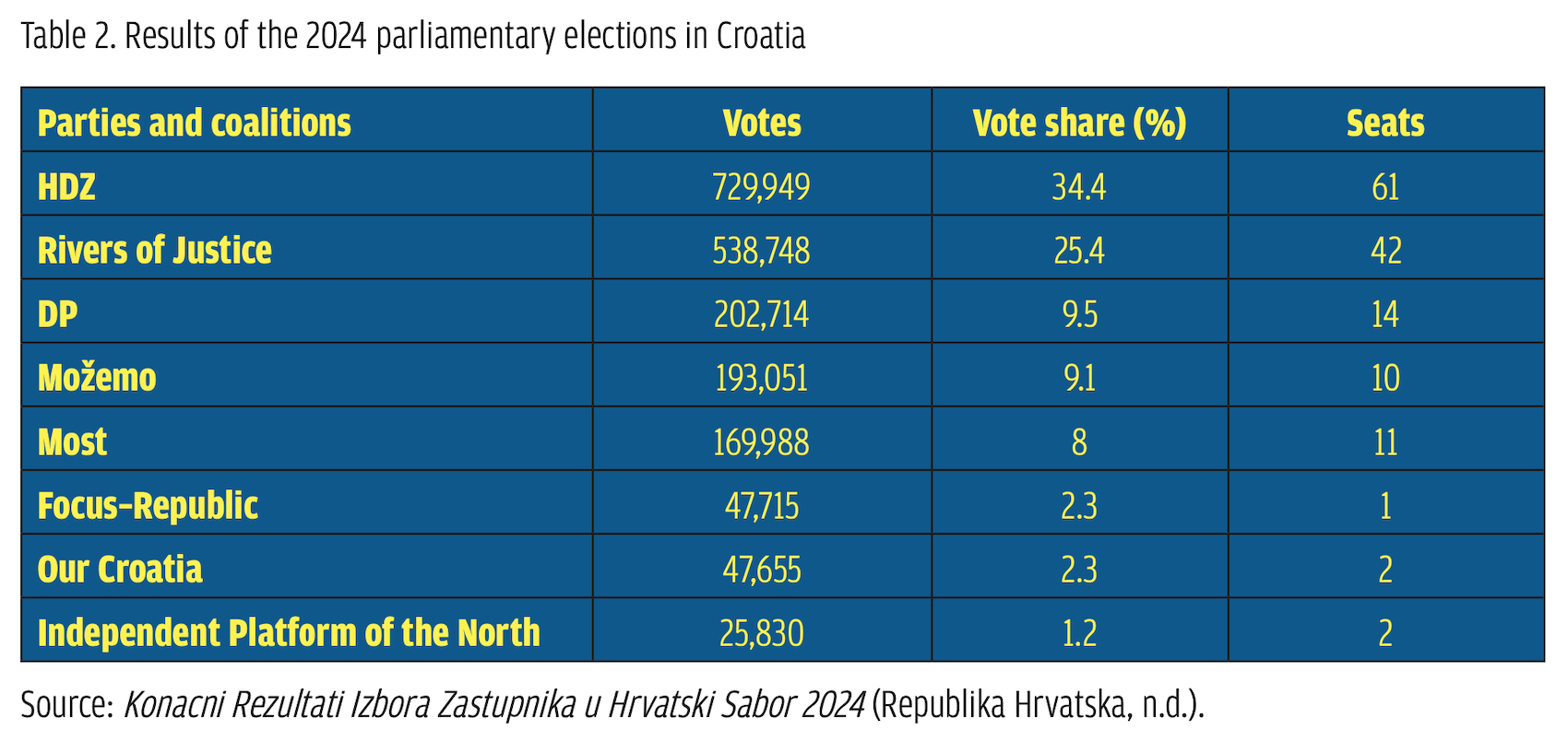 I begin the present chapter by sketching a typology of the constituent segments along the broad spectrum of the European right wing and situate the DP within it. I then offer a summary of the DP’s founding principles vis-à-vis further European integration and clarify the extent to which these principles were reflected in the party’s stances and active engagement in the latest European elections. I then identify the main catalysts behind the DP leadership’s success in mobilizing target groups and galvanizing electoral support for the party.
I begin the present chapter by sketching a typology of the constituent segments along the broad spectrum of the European right wing and situate the DP within it. I then offer a summary of the DP’s founding principles vis-à-vis further European integration and clarify the extent to which these principles were reflected in the party’s stances and active engagement in the latest European elections. I then identify the main catalysts behind the DP leadership’s success in mobilizing target groups and galvanizing electoral support for the party.
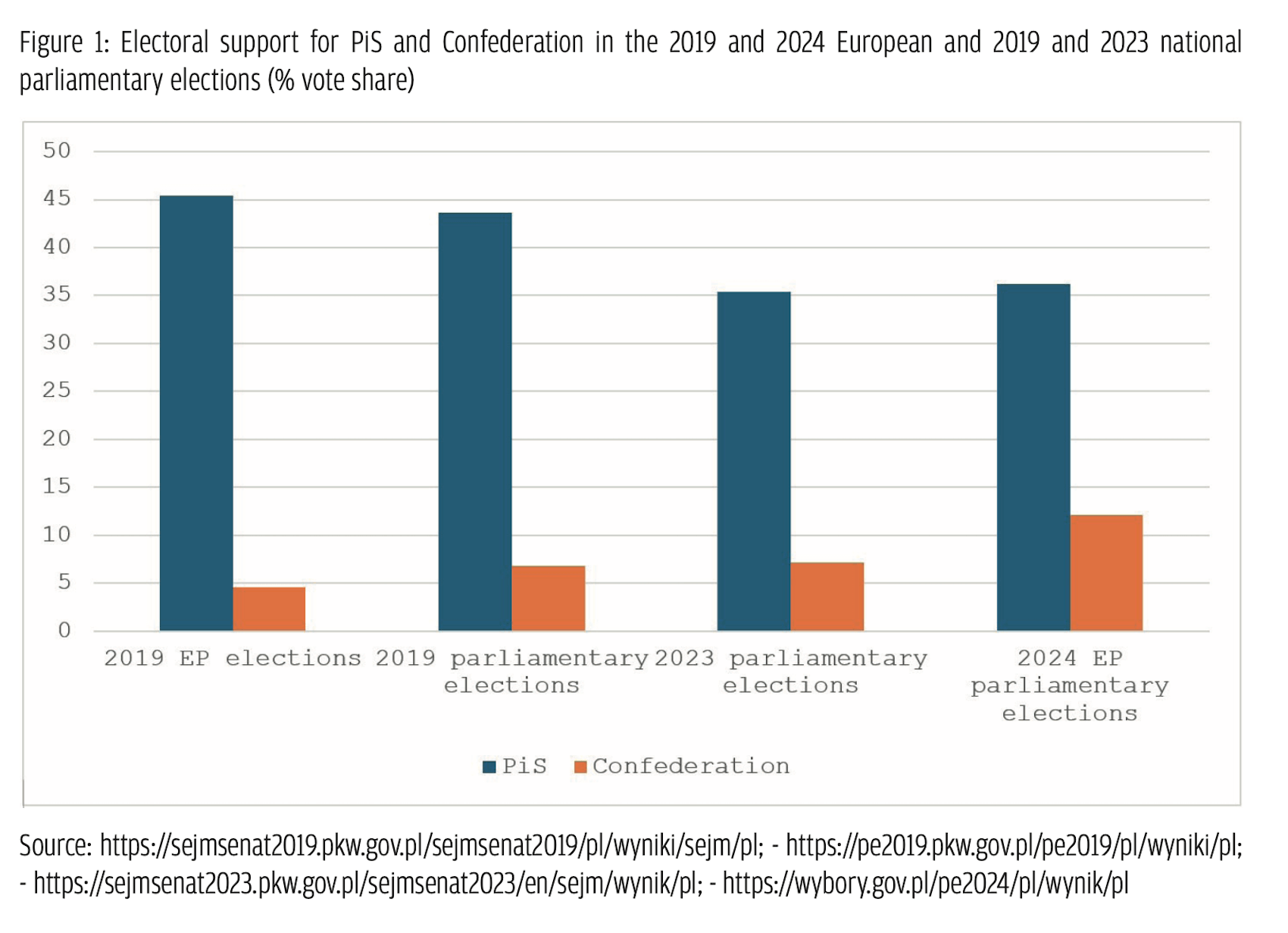
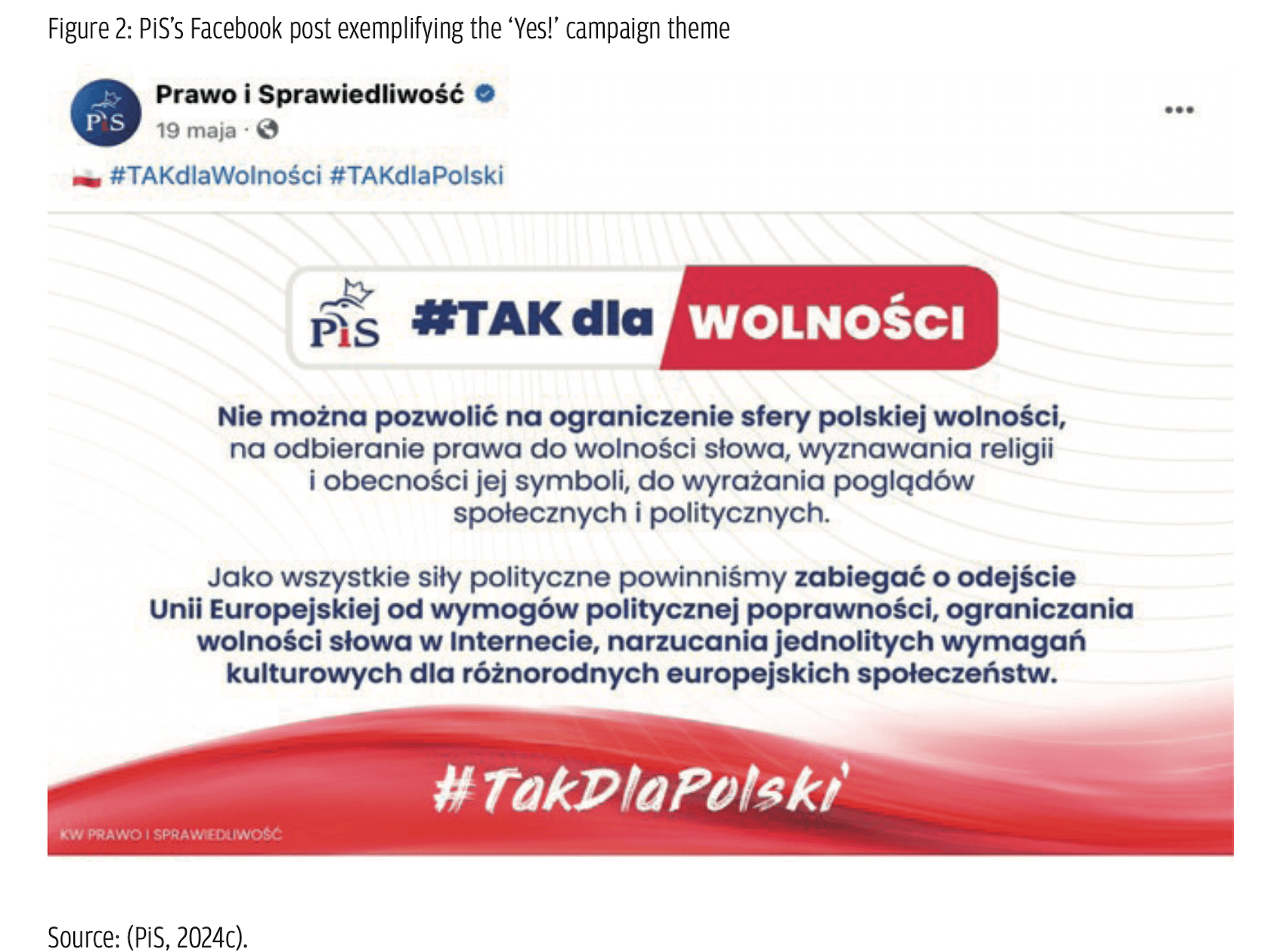


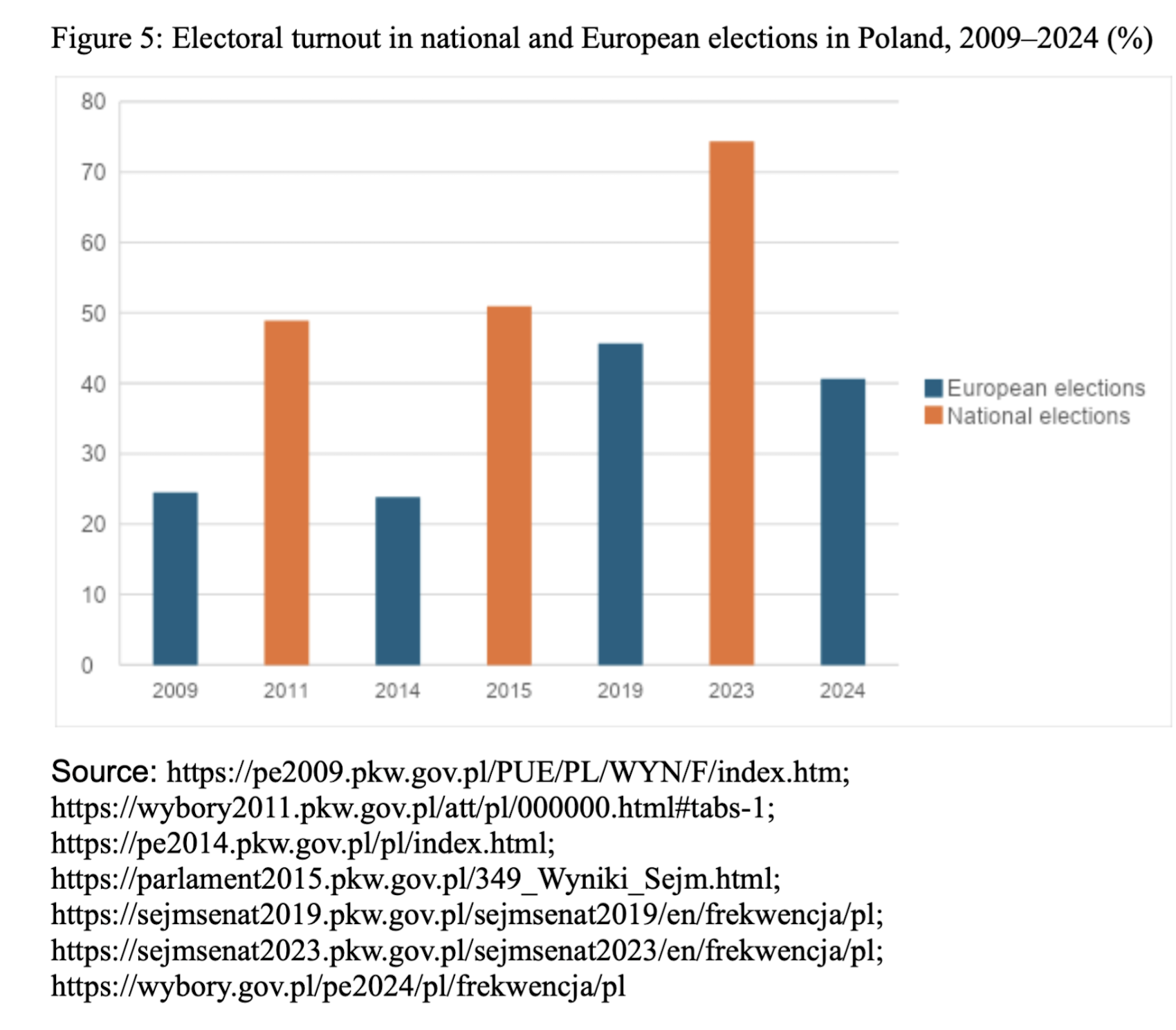

 Within this period, Bulgaria had two short-lived regular governments. A new coalition government was formed in December after the November 2021 elections, under the premiership of Kiril Petkov, uniting the winner of the election PP (25.67%) with three coalition partners—BSP, ITN and the DB alliance. The government survived until June 2022, when it was removed by a parliamentary vote of no confidence initiated by GERB after ITN ended its support for the government and withdrew its members from ministerial posts. The Petkov government had the difficult task of dealing with the war in Ukraine, which erupted in February 2022 and divided public opinion in Bulgaria. With a large pro-Russian population, the war enabled parties like Vazrazhdane to thrive while constraining the government to maintain a delicate balance between the country’s commitment to its Euro-Atlantic partners and pressure from pro-Russian groups. Although Bulgaria enforced EU sanctions on Russia, phased out Russian oil deliveries, and provided military support for Ukraine, there has been continuous opposition from both inside and outside the National Assembly to these actions (Zankina, 2023).
Within this period, Bulgaria had two short-lived regular governments. A new coalition government was formed in December after the November 2021 elections, under the premiership of Kiril Petkov, uniting the winner of the election PP (25.67%) with three coalition partners—BSP, ITN and the DB alliance. The government survived until June 2022, when it was removed by a parliamentary vote of no confidence initiated by GERB after ITN ended its support for the government and withdrew its members from ministerial posts. The Petkov government had the difficult task of dealing with the war in Ukraine, which erupted in February 2022 and divided public opinion in Bulgaria. With a large pro-Russian population, the war enabled parties like Vazrazhdane to thrive while constraining the government to maintain a delicate balance between the country’s commitment to its Euro-Atlantic partners and pressure from pro-Russian groups. Although Bulgaria enforced EU sanctions on Russia, phased out Russian oil deliveries, and provided military support for Ukraine, there has been continuous opposition from both inside and outside the National Assembly to these actions (Zankina, 2023).
 More importantly, the two-in-one elections significantly shifted the debate towards domestic issues. Opinion polls indicated corruption (59%), low income (57%), and healthcare (45%) to be the top three issues of voter concern (Alpha Research 2024a), while poverty and equality were singled out as the top priorities the EU should focus on (Trend 2024). Rising prices and increased cost of living (56%) along with the economic situation (53%) were the main motivators for Bulgarian voters – much more so than the EU average of 42% and 41%, respectively (Eurobarometer 2024).
More importantly, the two-in-one elections significantly shifted the debate towards domestic issues. Opinion polls indicated corruption (59%), low income (57%), and healthcare (45%) to be the top three issues of voter concern (Alpha Research 2024a), while poverty and equality were singled out as the top priorities the EU should focus on (Trend 2024). Rising prices and increased cost of living (56%) along with the economic situation (53%) were the main motivators for Bulgarian voters – much more so than the EU average of 42% and 41%, respectively (Eurobarometer 2024).  GERB convincingly won the 2024 European Parliament elections with 23.55% of the votes and five seats. Second came Dvizhenie za Prava i Svobodi (Movement for Rights and Freedoms, DPS) with 14.66% of the votes and three seats, closely followed by the PP–DB alliance, with 14.45% and the same number of seats, and Vazrazhdane (Revival) with 13.98% and also three seats. While pro-EU parties received the majority of the votes in the election, the results of Vazrazhdane and the increase of radical-right MEPs from 2 to 3 are a cause for great concern amidst an overall rise of the populist radical right in the European Parliament.
GERB convincingly won the 2024 European Parliament elections with 23.55% of the votes and five seats. Second came Dvizhenie za Prava i Svobodi (Movement for Rights and Freedoms, DPS) with 14.66% of the votes and three seats, closely followed by the PP–DB alliance, with 14.45% and the same number of seats, and Vazrazhdane (Revival) with 13.98% and also three seats. While pro-EU parties received the majority of the votes in the election, the results of Vazrazhdane and the increase of radical-right MEPs from 2 to 3 are a cause for great concern amidst an overall rise of the populist radical right in the European Parliament. 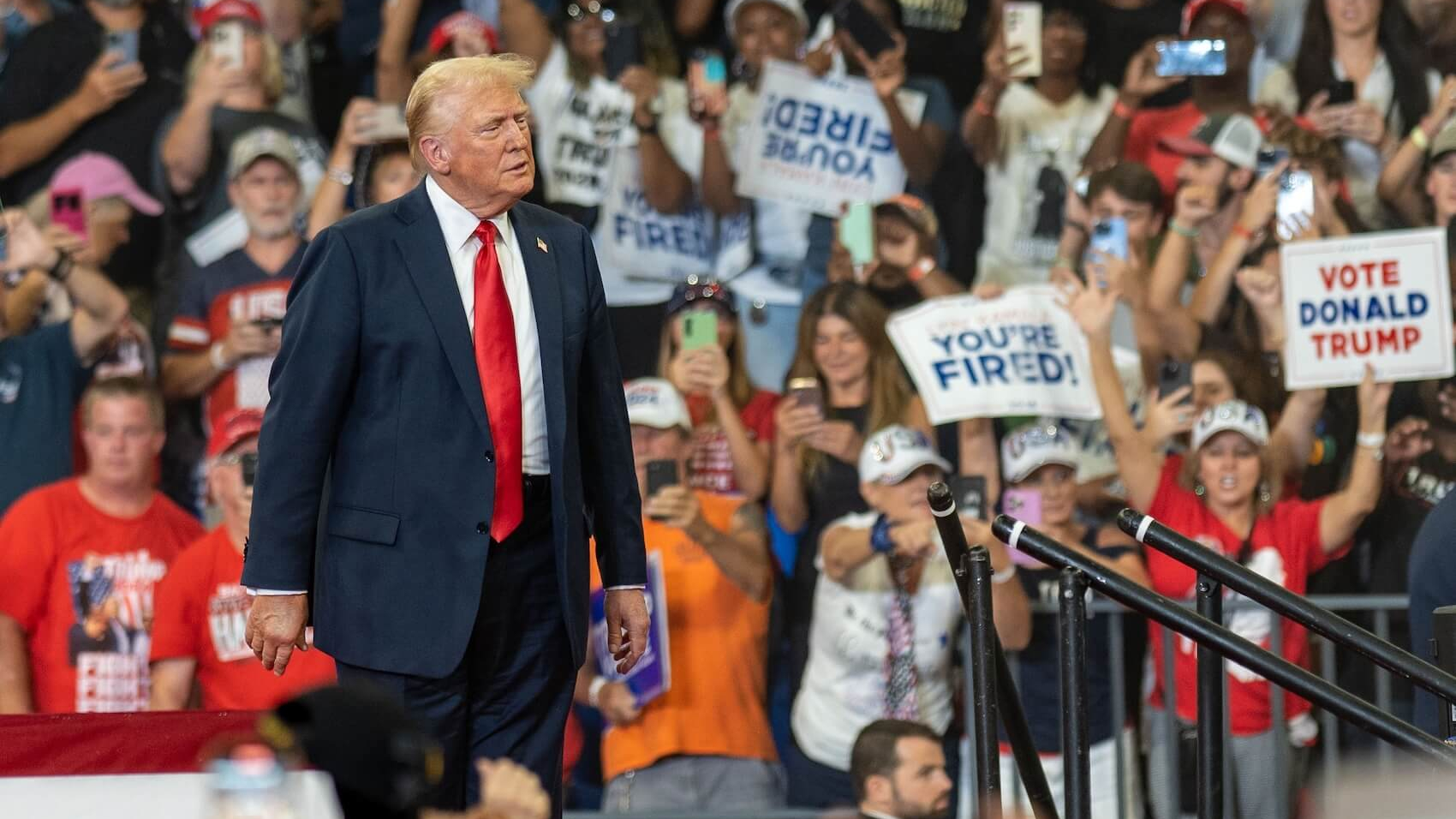
 Europe has also faced difficulties controlling the increasing numbers of its migrant population. According to the International Organization for Migration (McAuliffe & Oucho, 2024), there are approximately 87 million migrants living in Europe. In the context of migration crises, which often disproportionately impact EU member states, balancing European cohesion has fragmented the Union. Additionally, in recent years, Western politics has witnessed a trend of a right-wing shift (see Figure 1) and increased support for populist leaders, which exacerbates this fragmentation (Europe Elects, 2024; Europe Politique, 2024).
Europe has also faced difficulties controlling the increasing numbers of its migrant population. According to the International Organization for Migration (McAuliffe & Oucho, 2024), there are approximately 87 million migrants living in Europe. In the context of migration crises, which often disproportionately impact EU member states, balancing European cohesion has fragmented the Union. Additionally, in recent years, Western politics has witnessed a trend of a right-wing shift (see Figure 1) and increased support for populist leaders, which exacerbates this fragmentation (Europe Elects, 2024; Europe Politique, 2024).